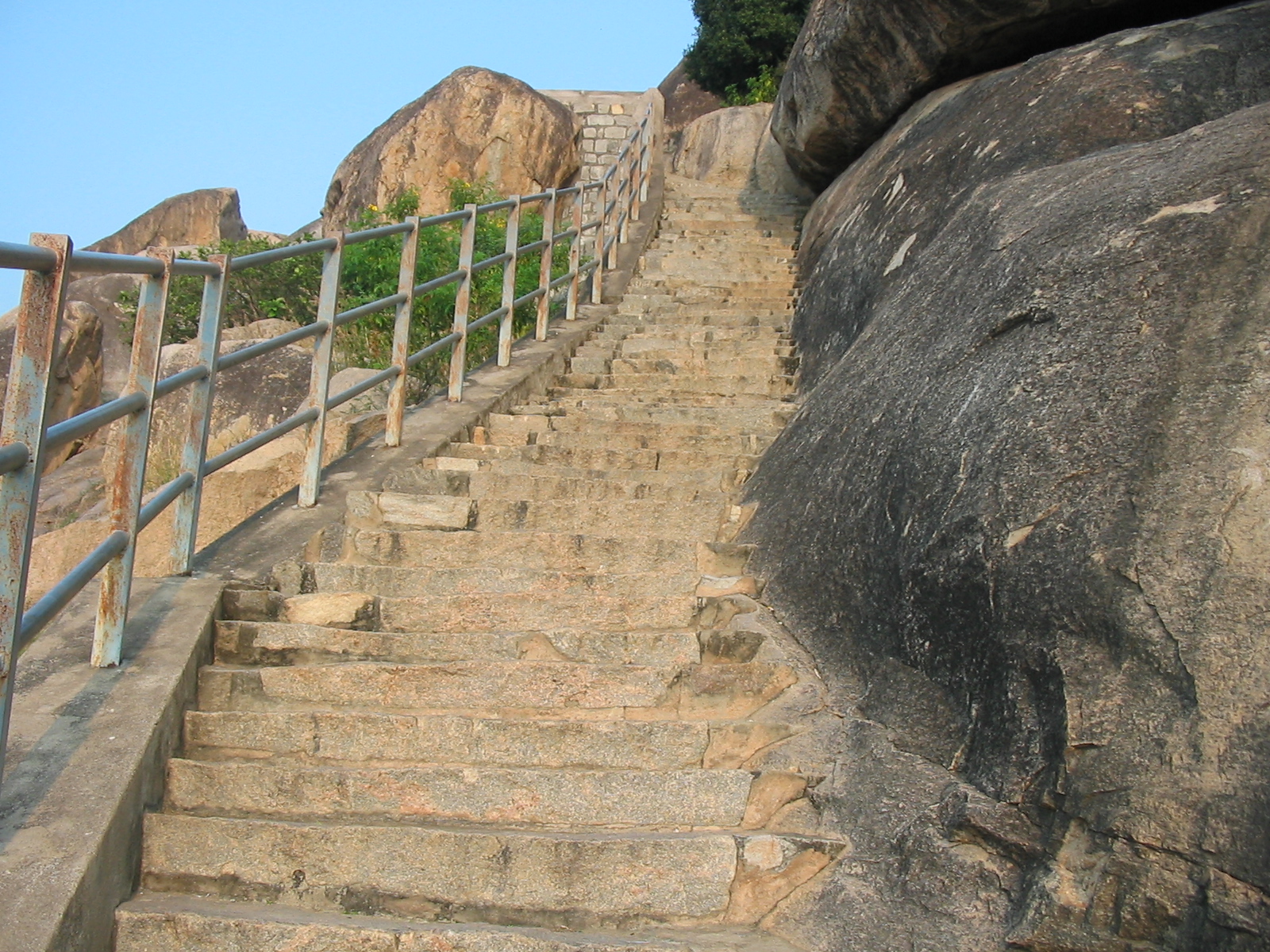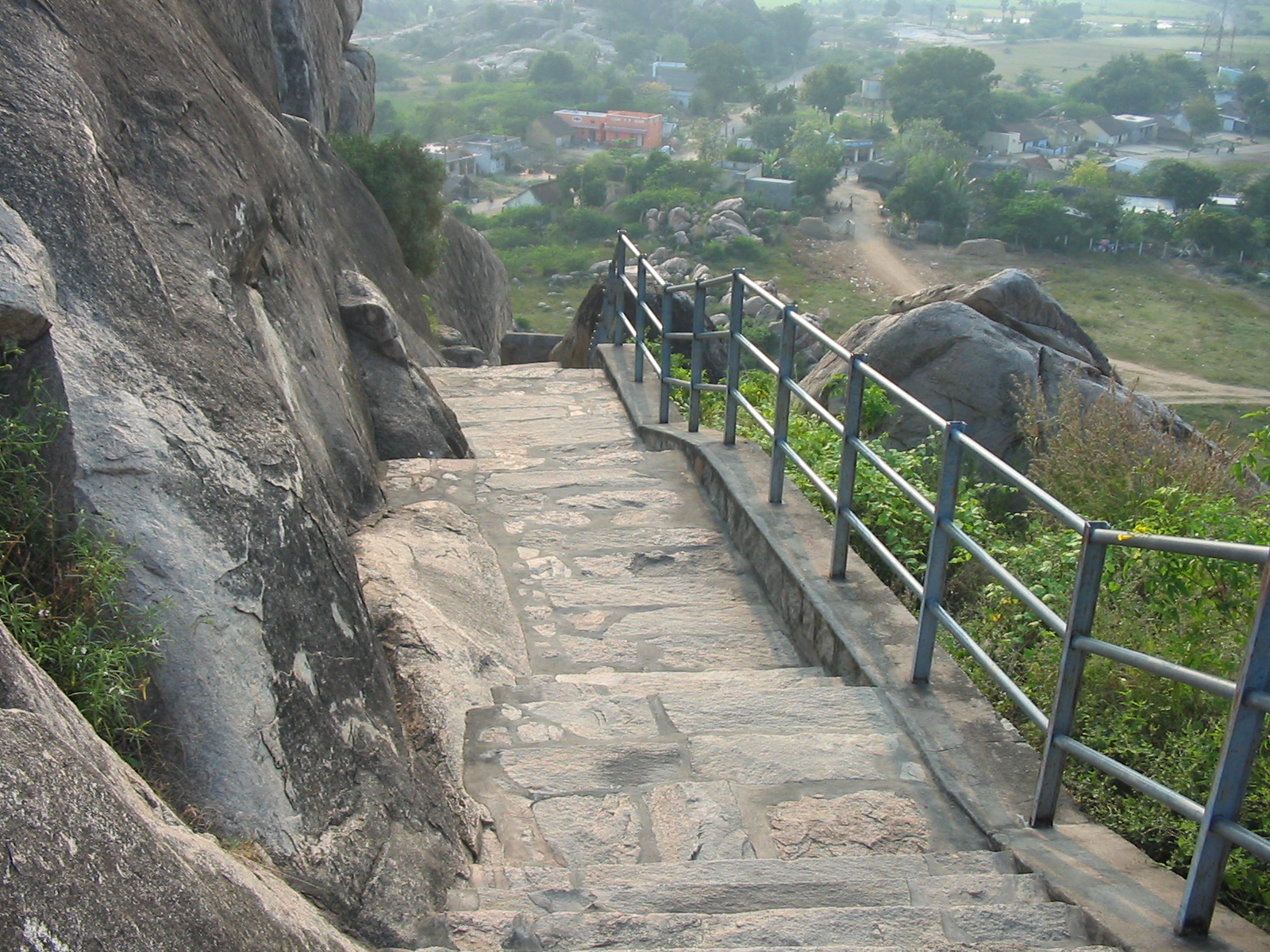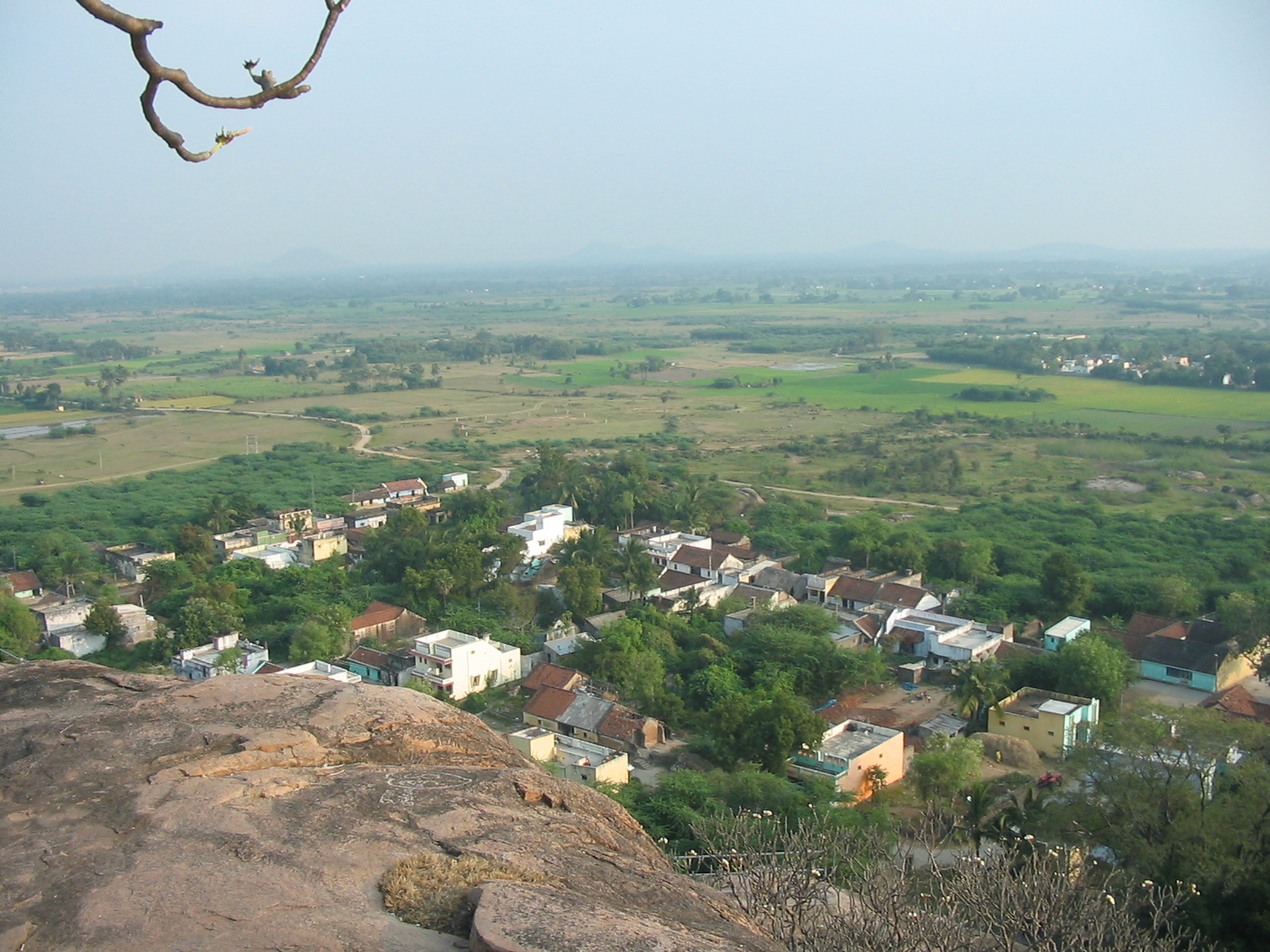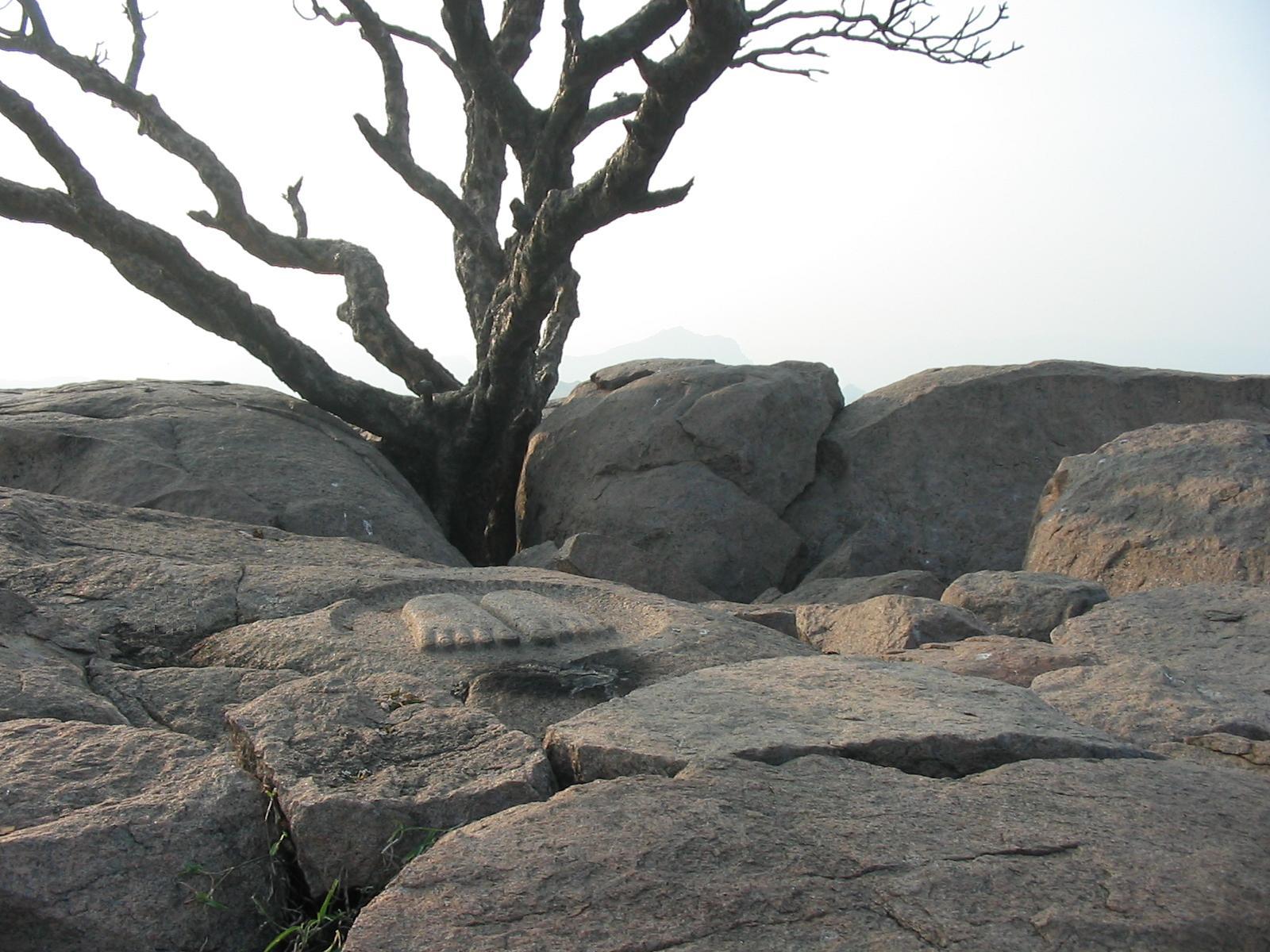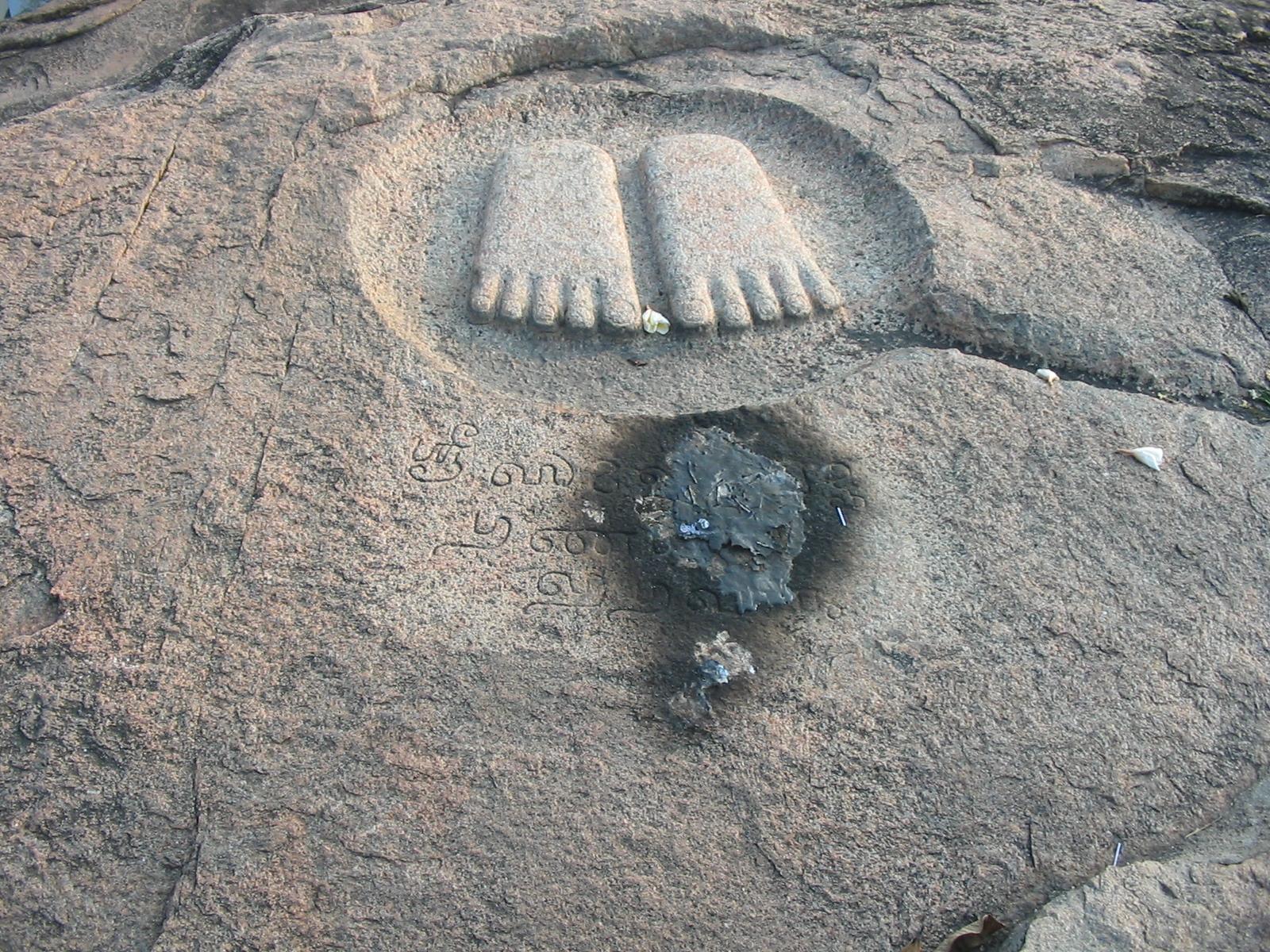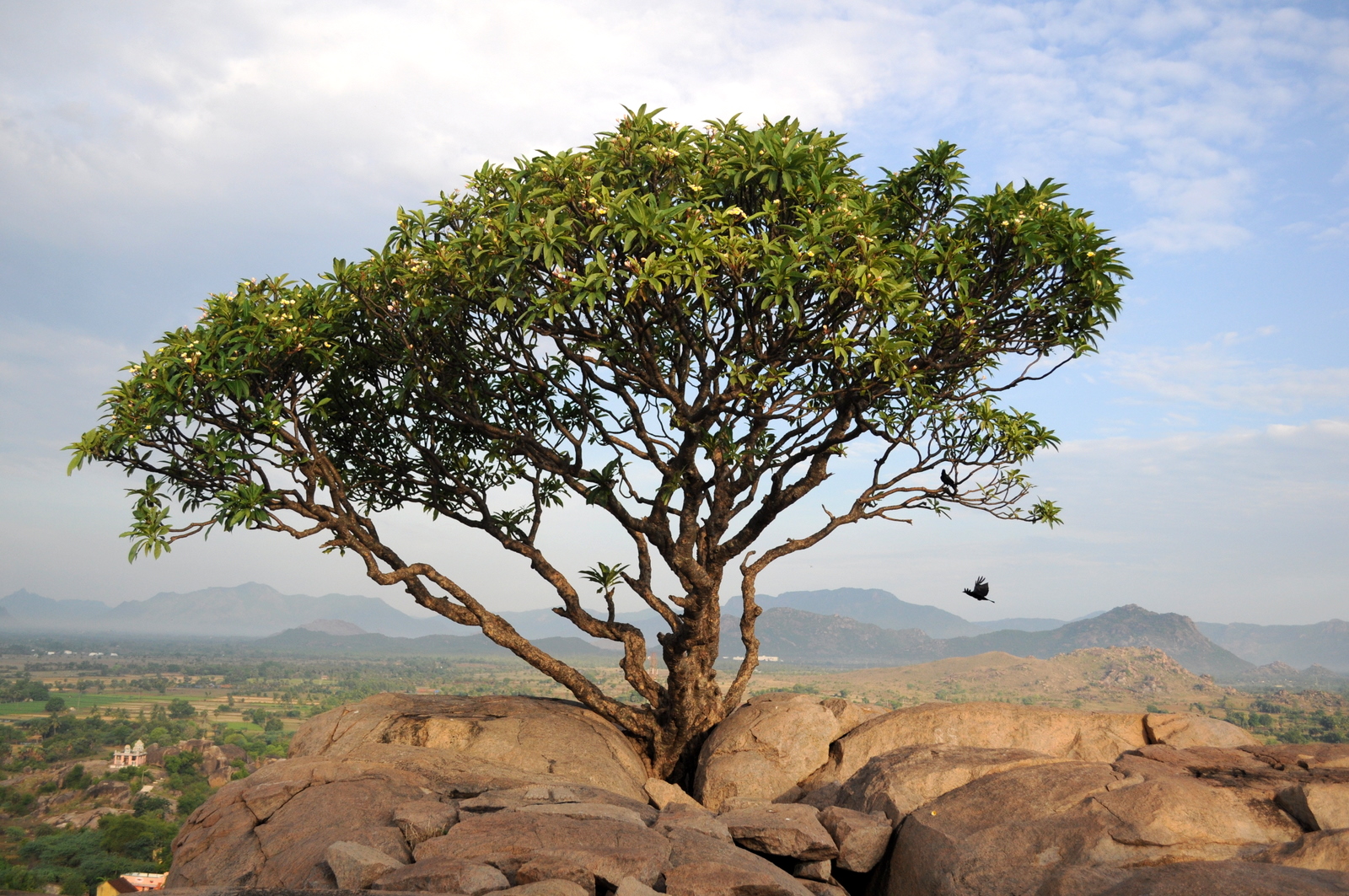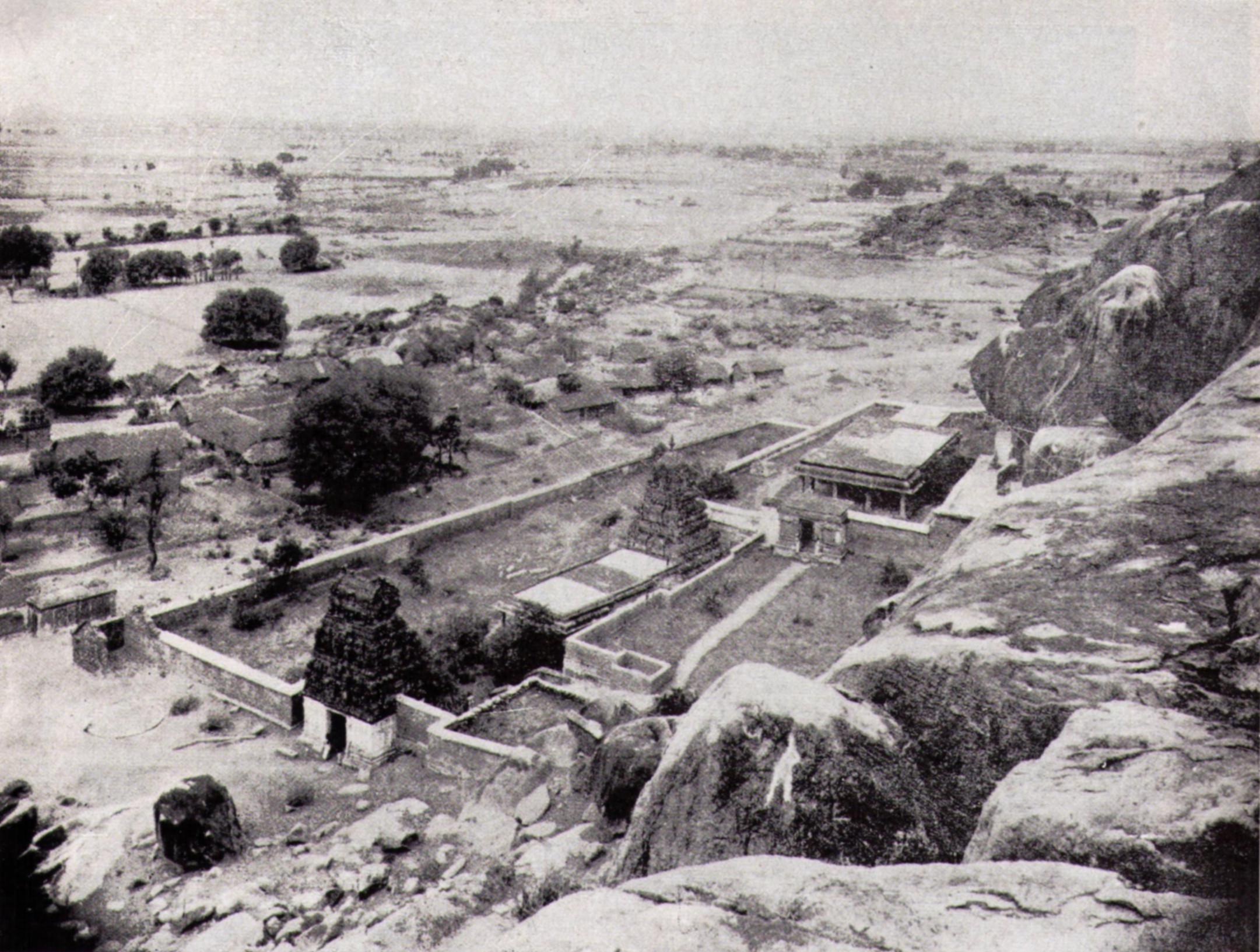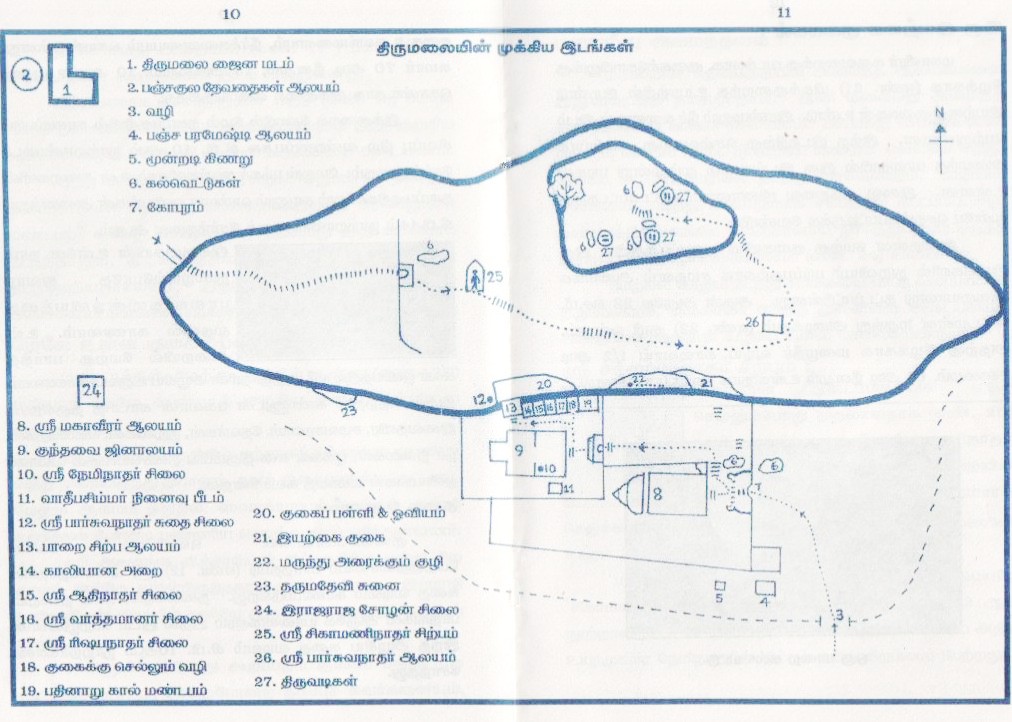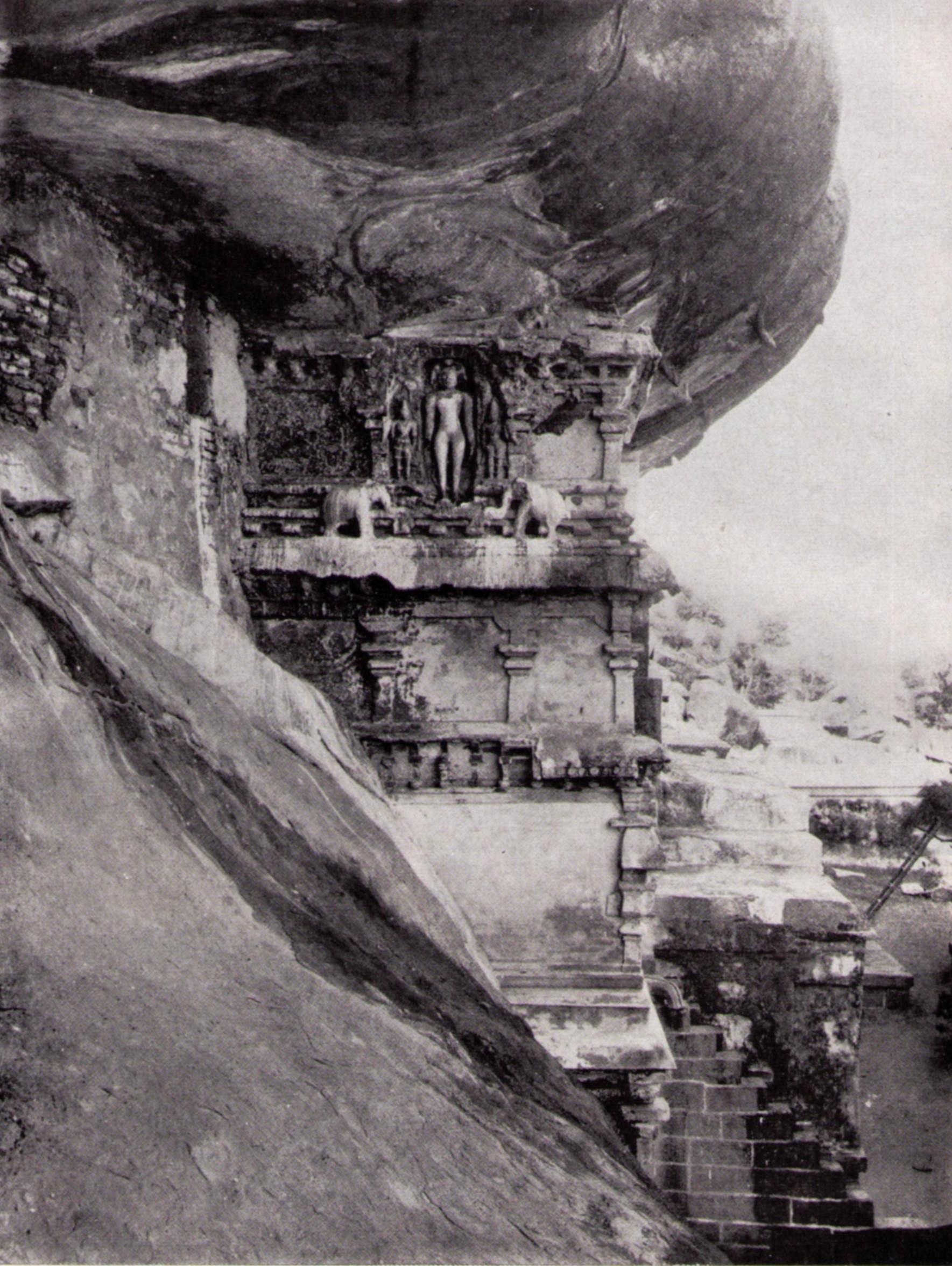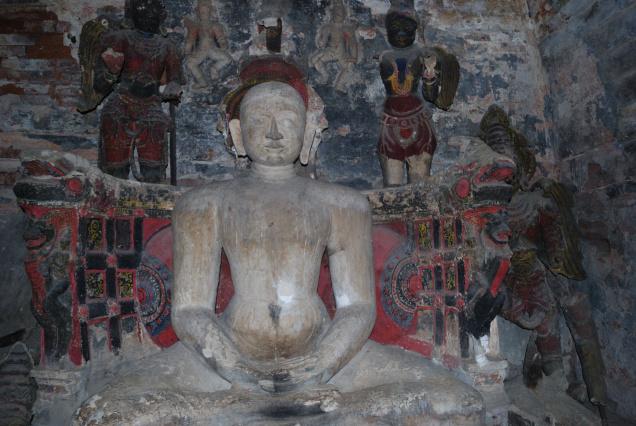
Jain Temples of Tirumalai
Tirumalai (or Thirumalai, lit. "the holy mountain"; also later Arhasugiri, lit. "the excellent mountain of the Arha[t]) and (in Tamil) Engunavirai-Tirumalai, "the holy mountain of the Arhar") is a Jain temple and cave complex dating from at least the 9th century that is located northwest of Polur in Tamil Nadu, southeast India. The complex includes three Jain caves, three temples and a 16 meter high sculpture of Neminatha thought to date from the 12th century that is the tallest Jaina image in Tamil Nadu.
K.V. Soundara Rajan in his paper "Jaina Art and Architecture in Tamilnāḍu" (published in U.P. Shah and M.A. Dhaky (eds.), Aspects of Jaina Art and Architecture, Ahmedabad 1975, pp. 137-160) write on Tirumalai:
This important Jaina centre situated in Polūr taluk contains on the top of the hillock, at middle level (in the form of caverns) and at the foot (in the form of two structural temples) one of the richest historical and art materials, by way of records, carvings and paintings of Jainism, dating from the Rāṣṭrakūṭa times to the late Vijayanagara period. The hill is called Vaigaimalai, presumably from the name Vaigavūr to the Jaina village at the foot. Even works like that of building a sluice to the tank nearby was done at the times of Rājarāja I, by a certain Guṇavīramamunivan, and was named after his teacher Gaṇiśekhara maru-porchurian (the second golden Sūrya Gaṇiśekhara). Another record of the time of Rājēndra Cōḷa in his 12th year records gift to temple at the top of the hill which it mentions by the name “Tirumalai” and this temple on top is called Kuṇḍavvai Jinālaya, apparently named after Rāja-Rāja's daughter, and thus of his time itself (even if it stands for Rājarāja's own elder sister of the same name). The record of Rājēndra informs that Cāmuṇḍabbe, the wife of a merchant Nannappayan living in Perumbāṇappadi, gave a perpetual lamp to this temple on the hill top and also grant for sacred food. Another, also in the 12th year of Rājēndra, refers to the gift of lamp by one Ilayamani Naṅgai and the lord of the temple is called Ārambhanandin. Money was endowed for the lamp by one Sinnavvai, a queen of a Pallava king.
Panoramic view of old Jain temples at the foot of the hill.
A record on the wall of a maṇḍapa at the base of the Tirumalai hill, dated in the tenth year of Kō-Māravarman Tribhuvanacakravartin Vīra Pāṇḍya dēva, refers to the building of a sluice at this place from the Madageri tank by one Ambala perumāḷ or Sinattarayan, a headman. A record of the twelfth year of Rājanārāyaṇa Śambuvarayan mentions the setting up of a Jaina image on the hill by one Nallattal, daughter of Mannai Ponnadai of Ponnūr for Viharanayanar Penneyilnāthan (synonymous for arhat). A small record on the lower temple maṇḍapa refers to the pious gift of well by the sons of Idaiyaran Appan for merit to accrue to one Sirrinaṅgai. A long record of the time of Śaka 1296 in the reign of Ommana Udayar, son of Kambana-Udayar forms a registration receipt for gift of land for the temple, bought by one Viṣṇu Kambuli Nayakar, by the people of the village for which the land was bought, represented by one Ankarai Śrīdhara-Bhaṭṭa.
A record in a small shrine below the painted cave refers to the image of a Yakṣī (which is seen also there) having been caused to be made by one Ariṣṭhanemi Ācharyan of Kodaikottur and a pupil of Paravādimallan of Tirumalai. An interesting record on the outer wall of the doorway leading to the painted cave refers to gifts made by one Vyāmukta-śravaṇojvala or (in Tamil) Viduka-duragīya-perumāḷ alias Atigaiman of the Cēra race, with his capital at Takata (Tagadūr), who was the son of Rājarāja and descendant of a certain Yavanikā (Erini) king of Veṅgi. This king repaired the images of a Yakṣa and Yakṣī made by Yavanikā and placed them on the hill and presented a gong and constructed a channel. The hill here is called Arhasugiri (Engunavirai Tirumalai).
Map of Tirumalai Jain temple site: Vaigaimalai with Tirthankar's footprints (27) on the hilltop and old temples (8 and 9) at the foot of the hill.
The remains on the hill (Tirumalai) comprise a large monolithic image of Neminātha on the hill top and a series of caverns converted into abodes, with paintings of various geometrical and other designs, besides Samavasaraṇa scenes. Besides these, of the two structural temples, one of them, with an intact gōpura entrance, at the lowest length, has painted panel scenes displayed in the sanctum on the drum-like circular zone above the wall proper and at the base of the śikhara shell. These two temples, dedicated to Vardhamāna and Neminātha respectively, are typical southern vimāna types of the late Cōḷa and early Vijayanagara period respectively, the larger and later being on the upper terrace of the hill relatively close to the cavern series. A large prākāra wall skirts the whole complex at the foot of the hill. The Vardhamāna temple rises in tritala with a circular grīvā and śikhara at the top. The interior plan is that of garbhagṛha, ardhamaṇḍapa, mahāmaṇḍapa all closed and an open mukhamaṇḍapa, with a common flat roof terrace.
Neminātha temple(Rāṣṭrakūṭa period), built against cliff base in three floors with rock-cut images at floor level.
The Neminātha temple has again another prākāra bandha with a gōpura entrance. The tower of this temple is missing. The garbhagṛha is square and has an ardhamaṇḍapa of similar width but a widening closed mahāmaṇḍapa and an open pillared mukhamaṇḍapa. The cornices of the mukhamaṇḍapas of both the temple are massive, with koḍuṅgai ribbings underneath in a typical Vijayanagara style. The topmost terrace also carries a small shrine which is attached to the bulge of the rock scarp here and is in alignment with the cavernous recession containing other caverns. Excavations occur at different levels vertically, with partially structural floors and stair-cases, rising three storeys high, with the topmost resting immediately under the horizontally projecting and over-hanging rocky bluff. The storeys are characterised by corner cantoning pilasters but the top two talas also carry wall pilasters and niche figures of Ajitanātha, within a makara toraṇa niche, flanked by Mahā Yakṣa and Rohiṇī, and with two standing elephants laterally shown carrying garlands on their slightly lifted trunks, against the varimana and vedī courses in applique stucco technique. The interior shrines at different levels show rock-cut carvings of the Cōḷa and Vijayanagara times. Of these the Dharmādēvi shrine with Gommata and two male attendants of the Imperial Cōḷa times (11th century A.D.) deserve attention, although the figure of Dharmādēvi is itself of the Vijayanagara times. The main shrine is, however, for Neminātha and is known as the Araikkoil (or the covered chambered temple) and is distinguished by extensive Vijayanagara and Nāyaka paintings.
Lakshmi Sharath, in her article “The Jain Connection. Temples at Thirumalai mirror the legacy of Jainism in Tamil Nadu” (The Hindu, 02.04.2011), describes a visit at Tirumalai:
We don't normally associate the Cholas with the Jains. But an inscription at a Jain temple in Thirumalai indicates that Kundavi, sister of Raja Raja Chola, had given grant to this 1,000-year-old shrine. Even today, locals refer to it as Kundavi Jainalaya.
It was a rather hot afternoon, and we were a small group walking around the rocky terrains of Thirumalai in Thiruvannamalai. Our guide was R. Venkatraman (retired professor of Art History, Madurai Kamaraja University), who, at the age of 77, seemed to be the youngest in the group, as he beamed with energy and enthusiasm and explained to us the legacy of Jainism in Tamil Nadu.
The sun was rather merciless as we climbed up a hillock to see an 18-ft monolith of Neminatha, the 22nd Tirthankara.
“Born a prince, he is believed to be the cousin of Krishna. You'll always see a conch or a chakra with him,” explained the professor. “Krishna had arranged for his wedding, but Neminatha could not accept the fact that his wedding feast would lead to the slaughter of goats, and he renounced the world.”
History and myth
A circular rock stood precariously on the hillock as we went around it and climbed further. We saw another temple; one dedicated to Parshvanatha, the 23rd Tirthankara. “Mahaveera and Parshvanatha were considered historic, while the rest of the 22 Tirthankaras, mythical.” A lone flowering tree emerged from the rocks, as if blooming for the deities.
Looking at the boulders and rocks strewn around with patches of fields, we realised there was more to Thirumalai than just Kundavi's Jainalaya.
The ancient Jain heritage site was filled with cave temples, paintings, monoliths, temples on hillocks and carvings - all probably dating between 10th and 15th Centuries, patronised by various dynasties and rulers. The caves had been the haven for several monks, and it is believed that Kunda Kunda Acharya, a revered Jain seer had visited the place as well.
As we stood atop the hill, we could see what are said to be the impressions of the feet of several monks, engraved on the rocks.
Walking down the hill, we went to a shrine dedicated to Mahaveera, the 24th Tirthankara. There were several shrines close by with more carvings. We entered a narrow dusty cell that opened into a flight of steps leading to a cave. This was probably where the Jain monks had lived. The walls were painted in rich colours, depicting deities, symbols, their ideologies through flowers, animals and human forms.
Epics by Jains
Jainism in Tamil Nadu dates back many centuries, so much so some of the epics in Tamil are believed to have been penned by Jains. Jains settled in and around Madurai, Kanchipuram and Thiruvannamalai, and are an indigenous community.
“The literature, art, paintings, temples, carvings - they have left behind a rich legacy for us here, waiting to be discovered,” summed up the professor, as we reached the Jain mutt for a simple meal.
Impressions from Jain temple site of Tirumalai
Old temples at the foot of the hill
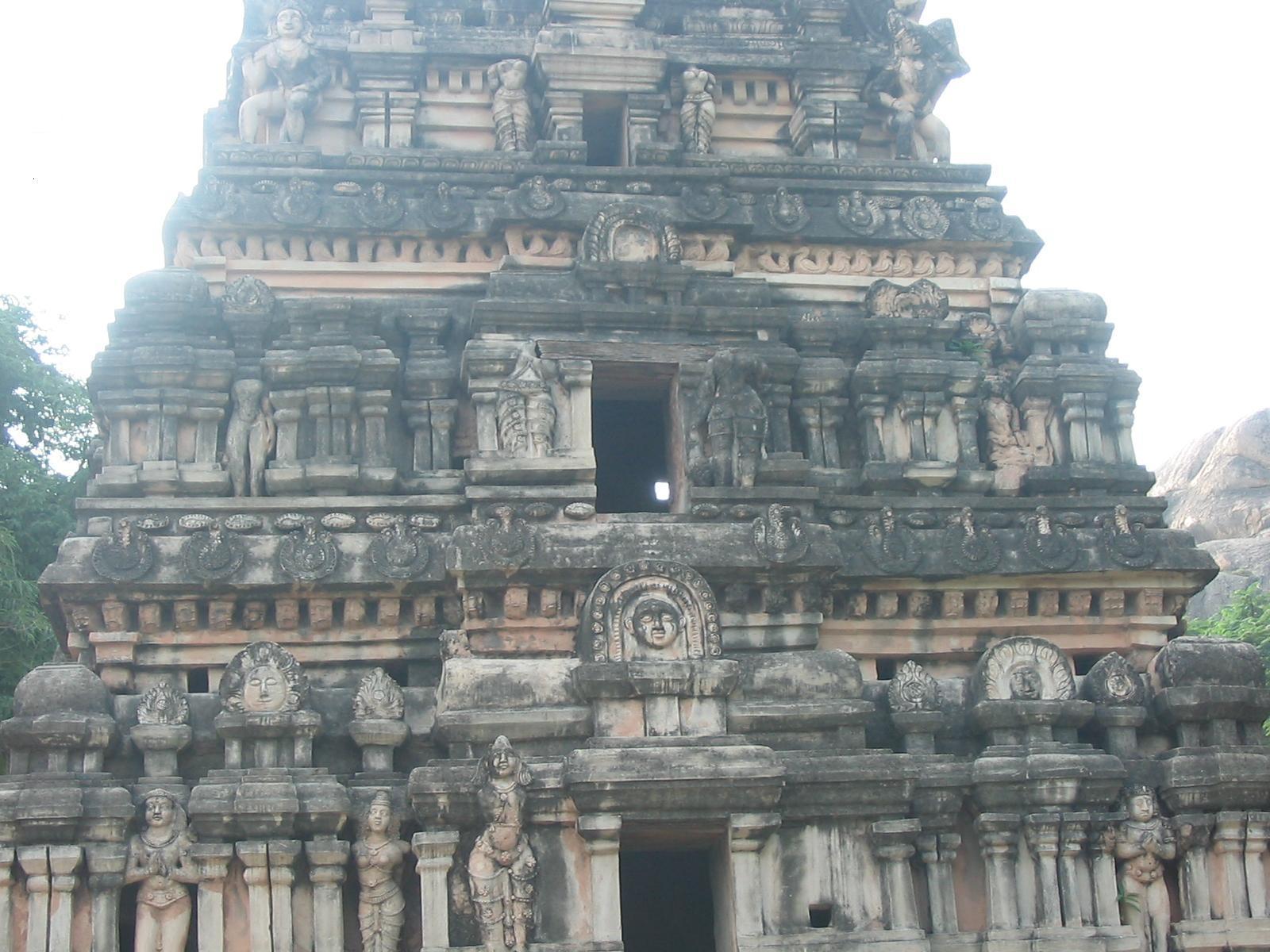
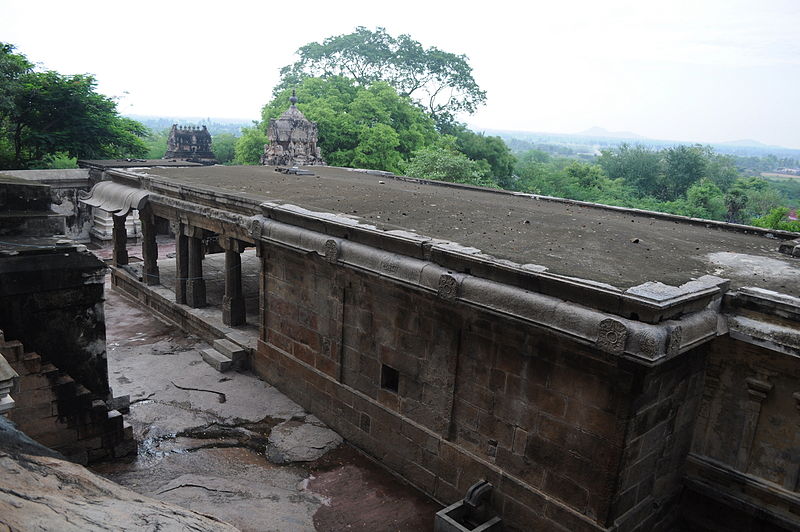
Sculptures
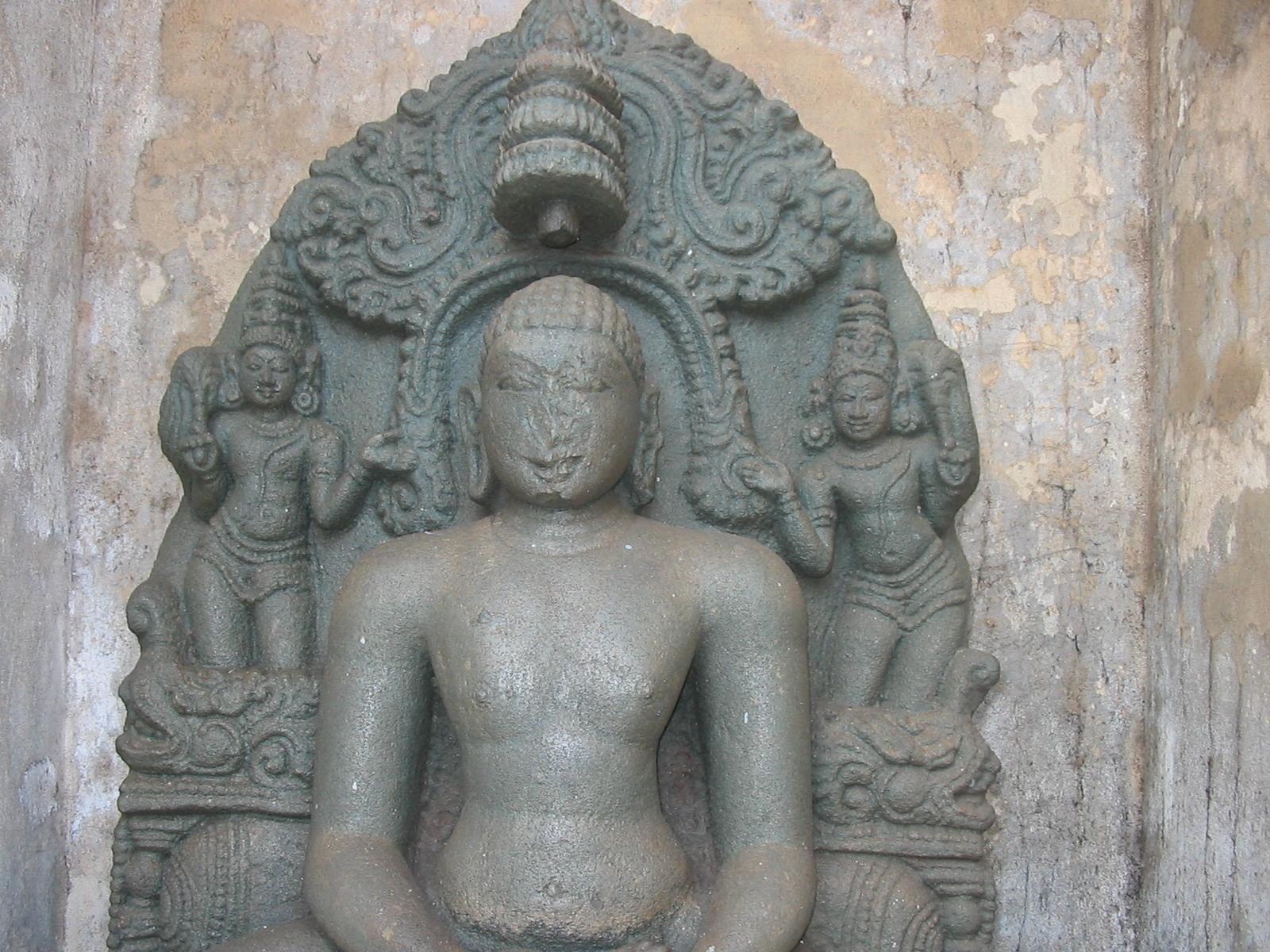
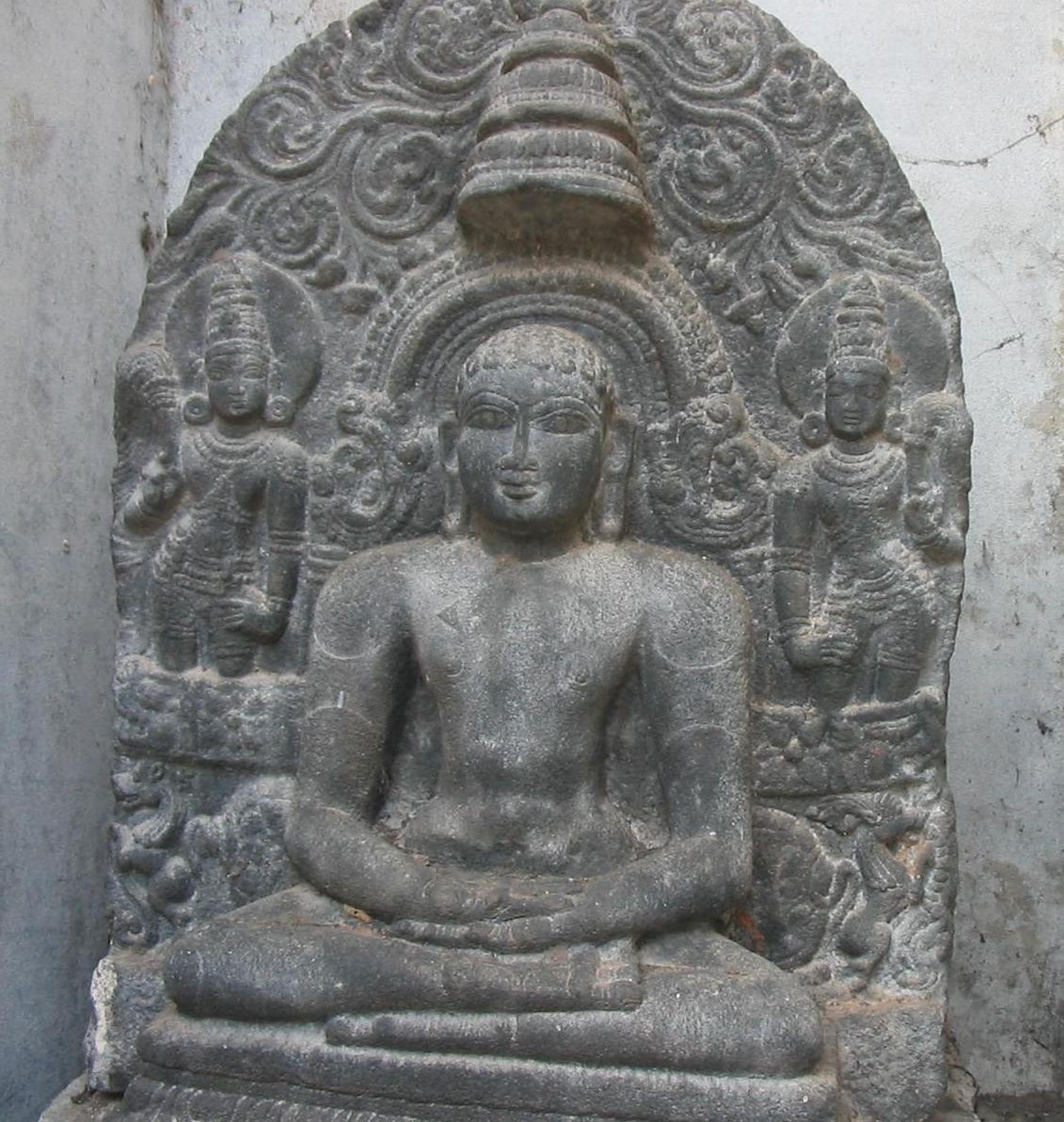
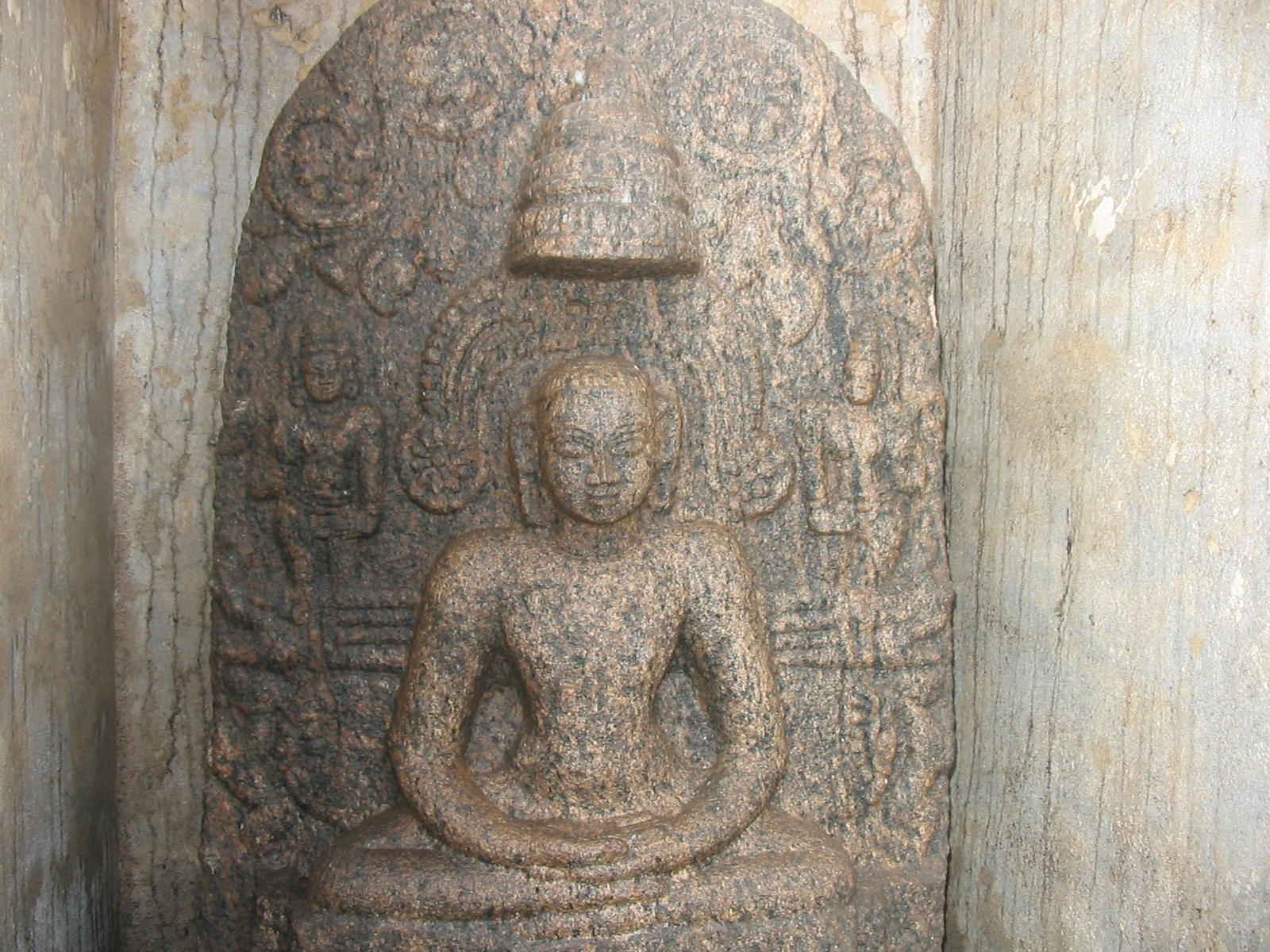
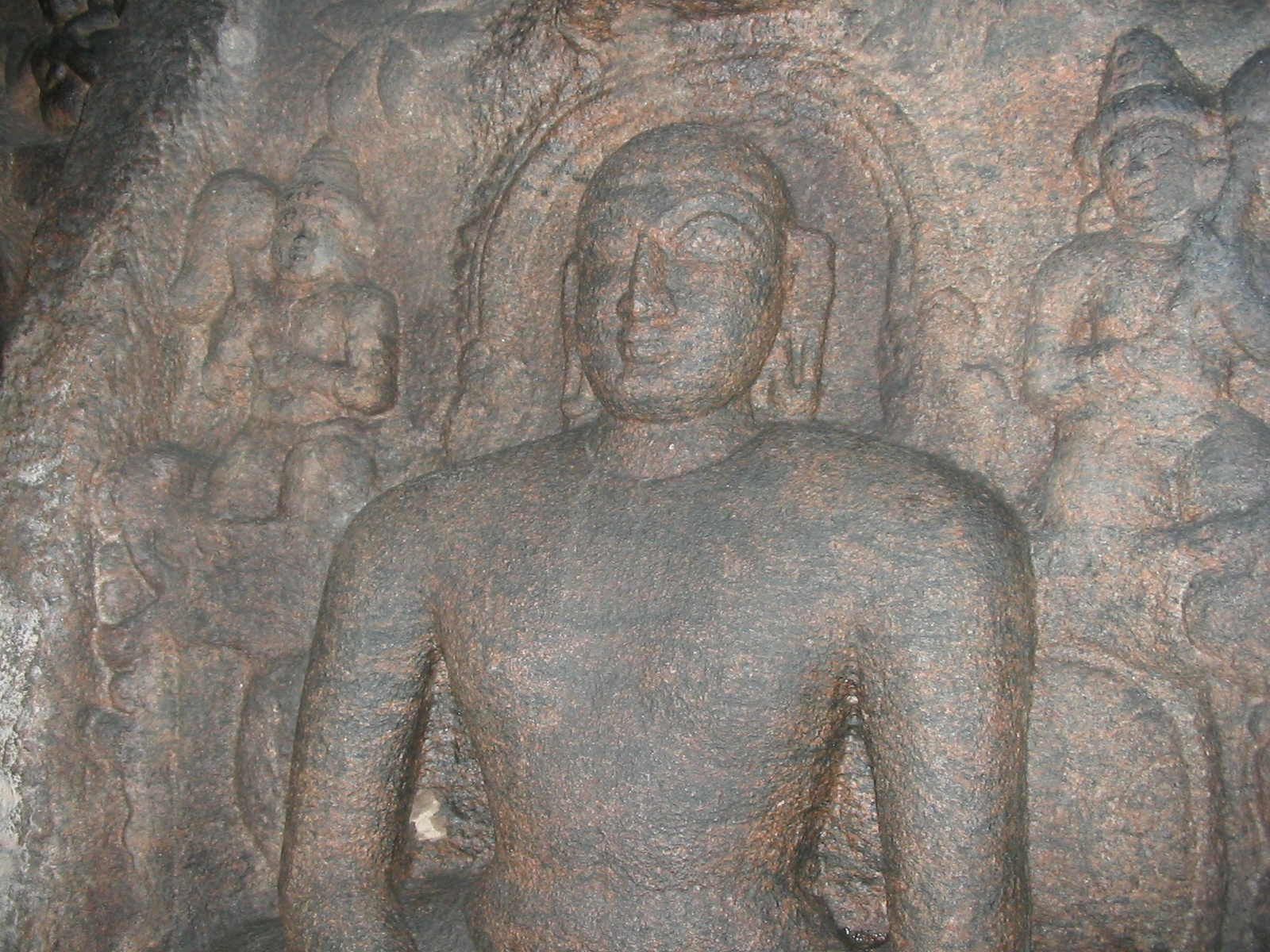

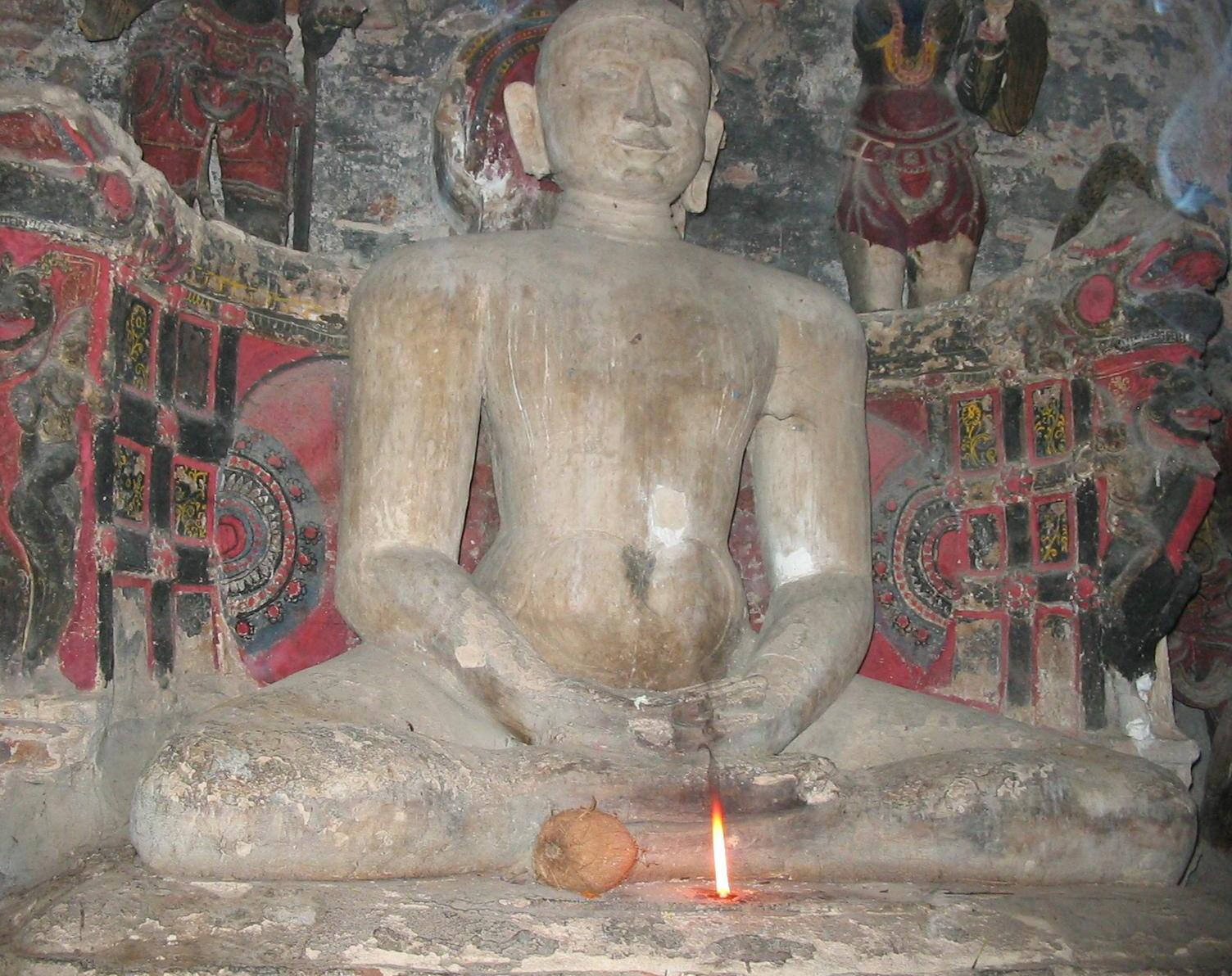
Wall paintings
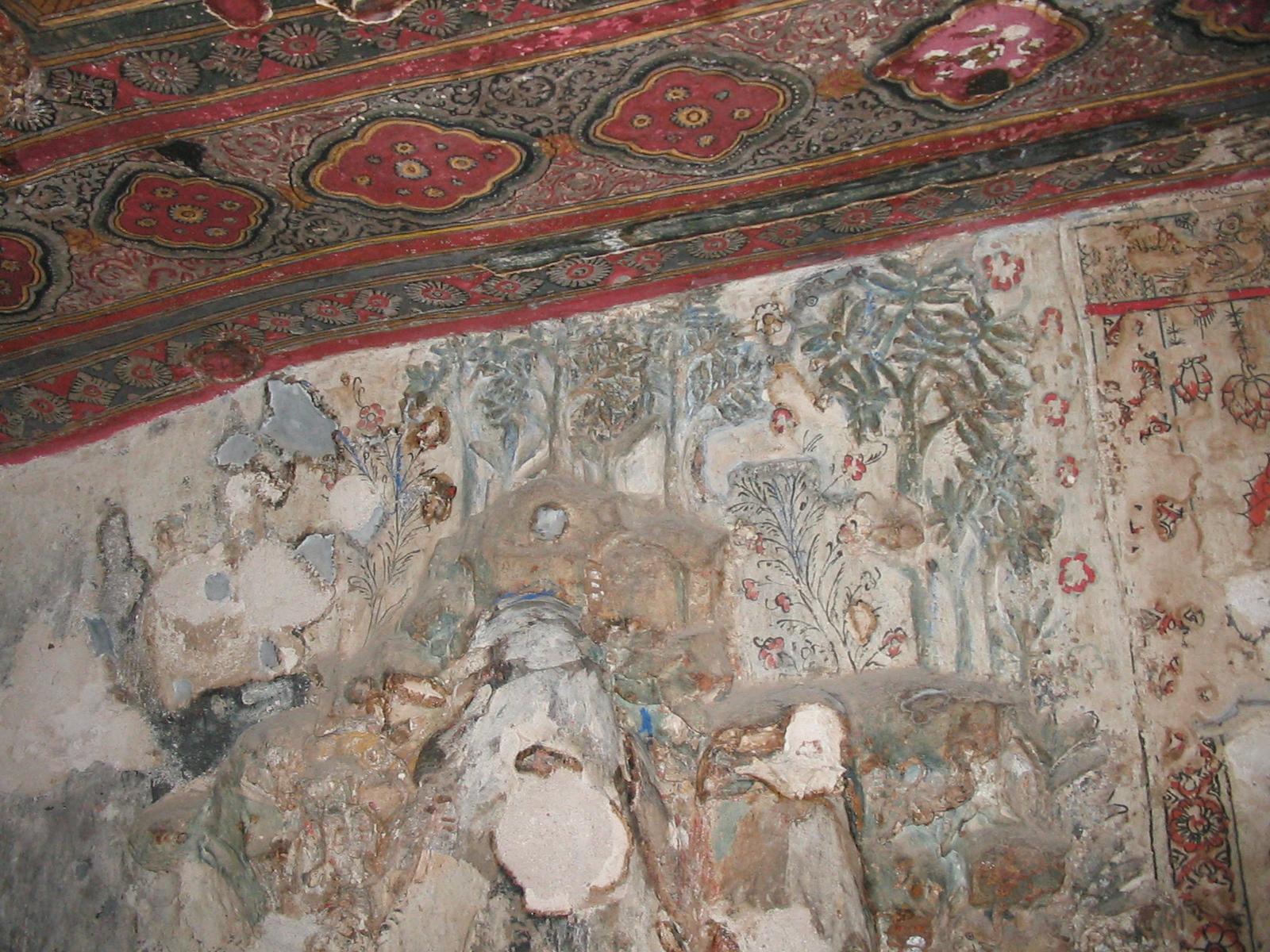
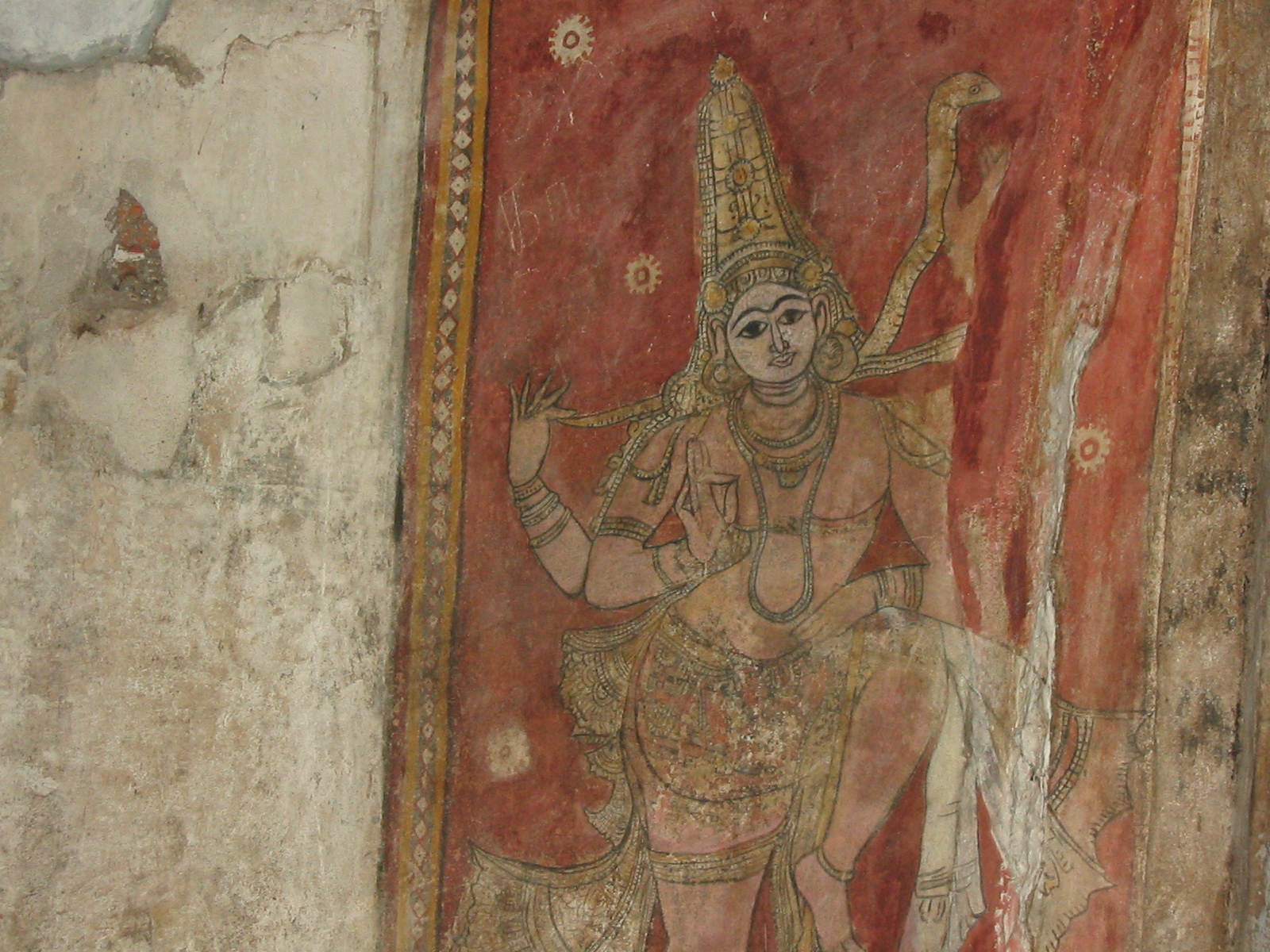

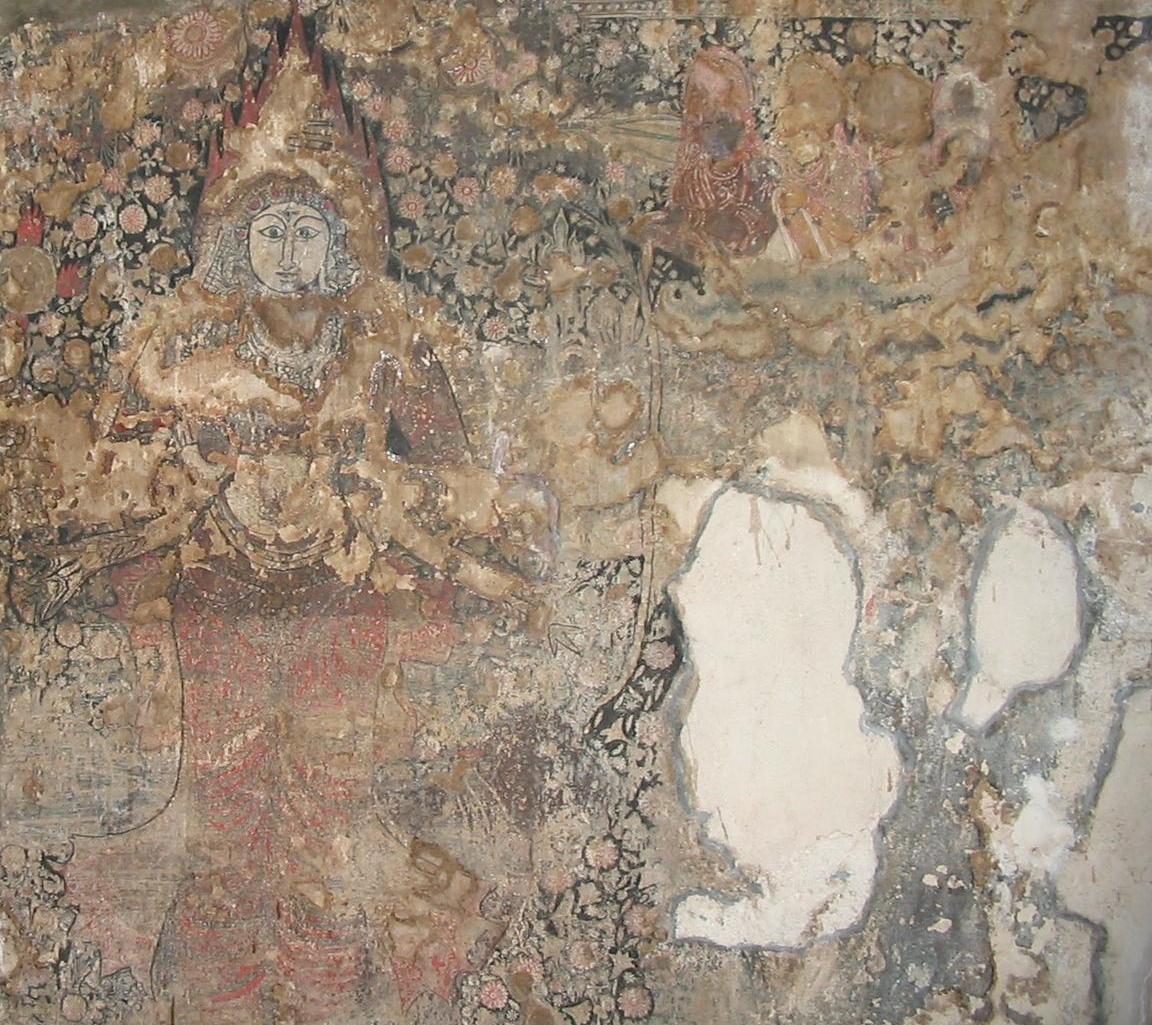
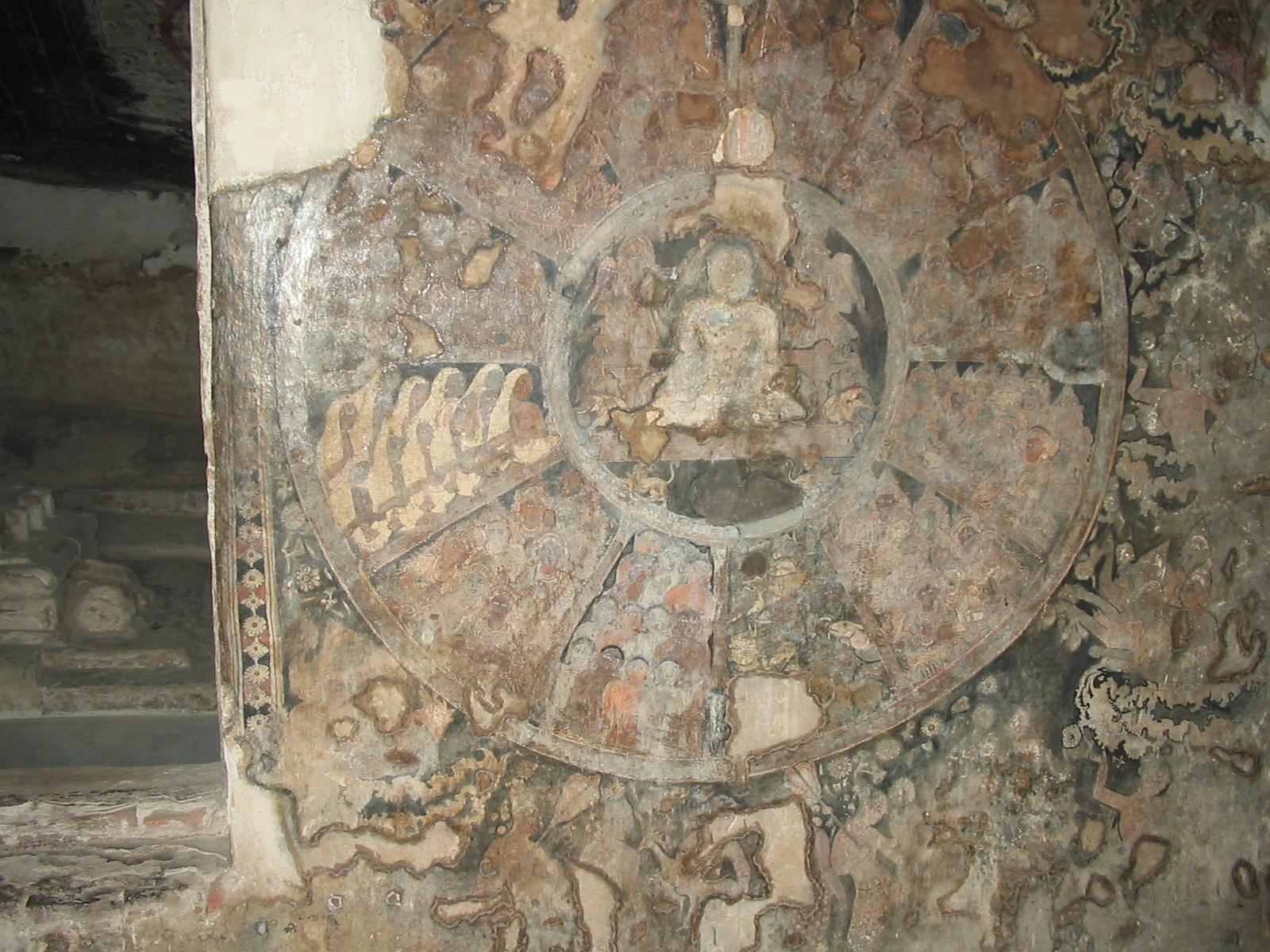
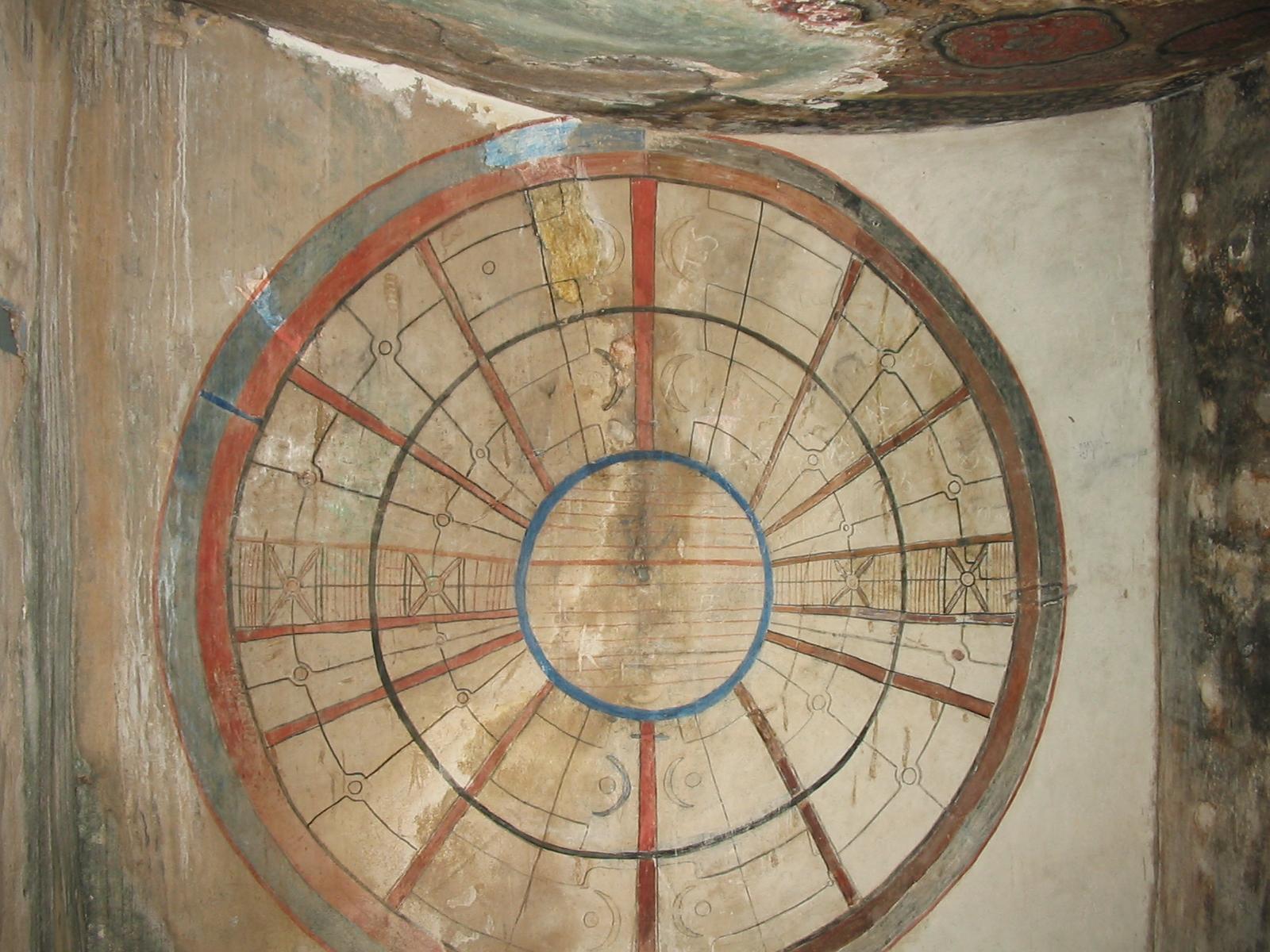
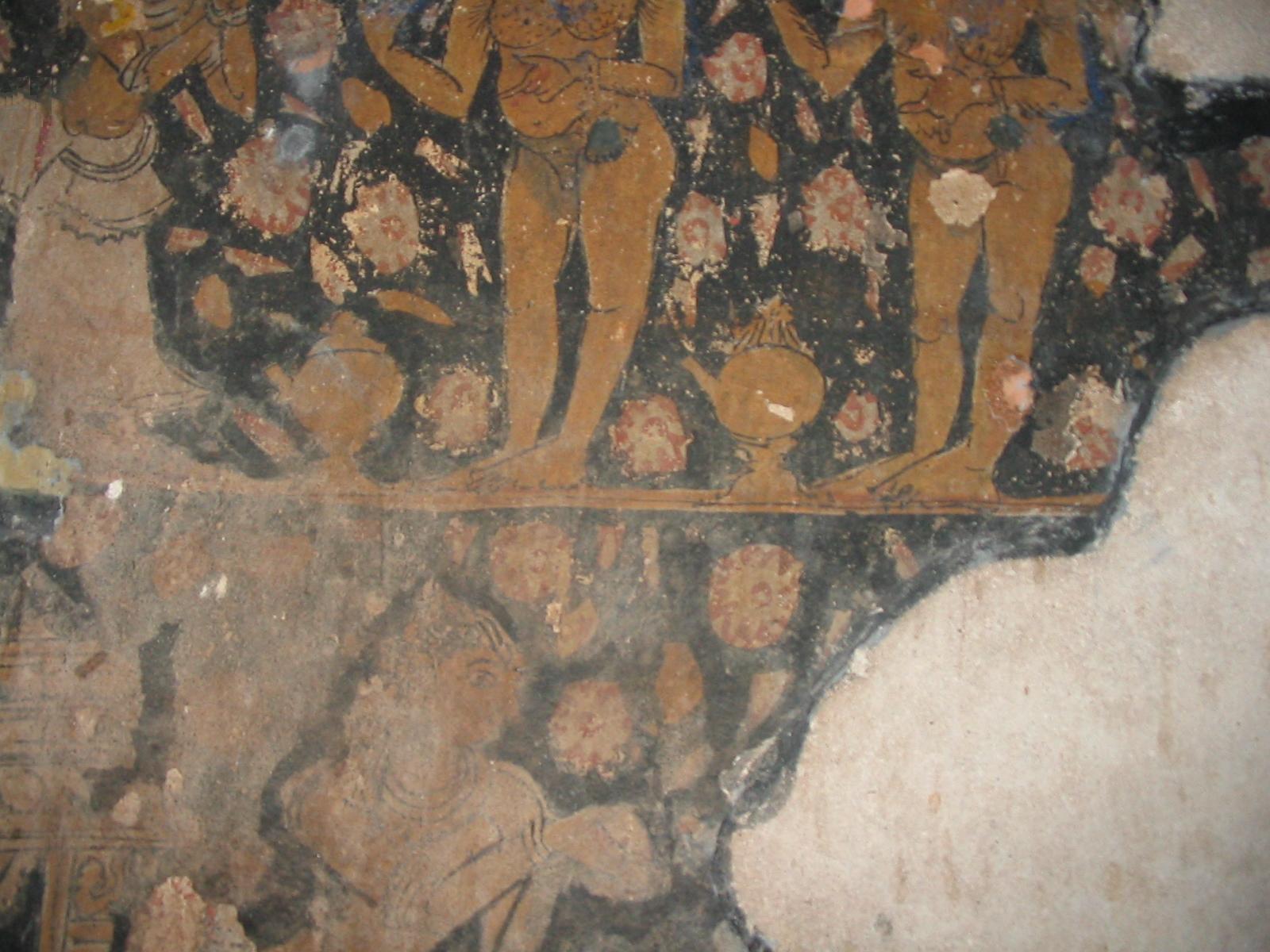
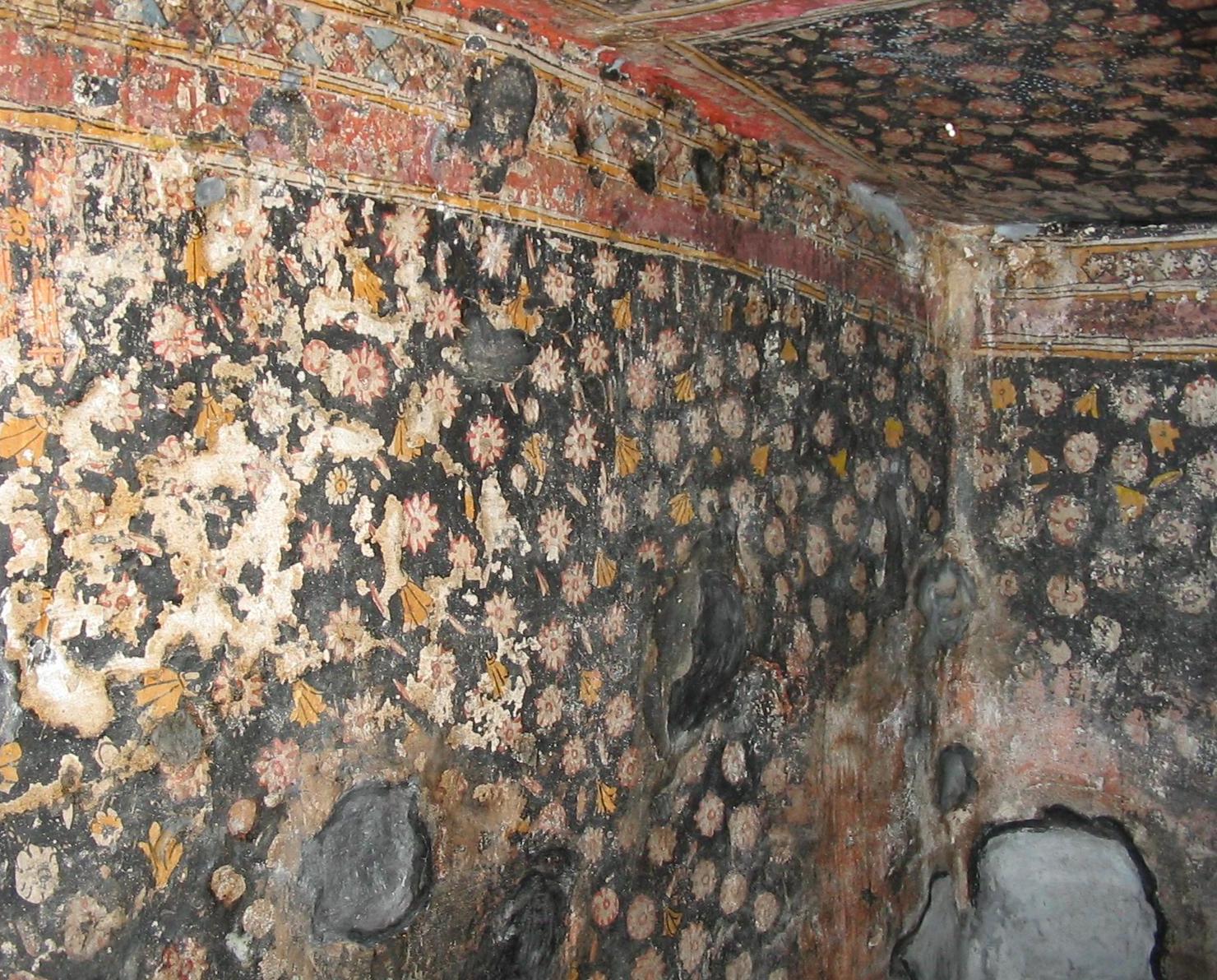
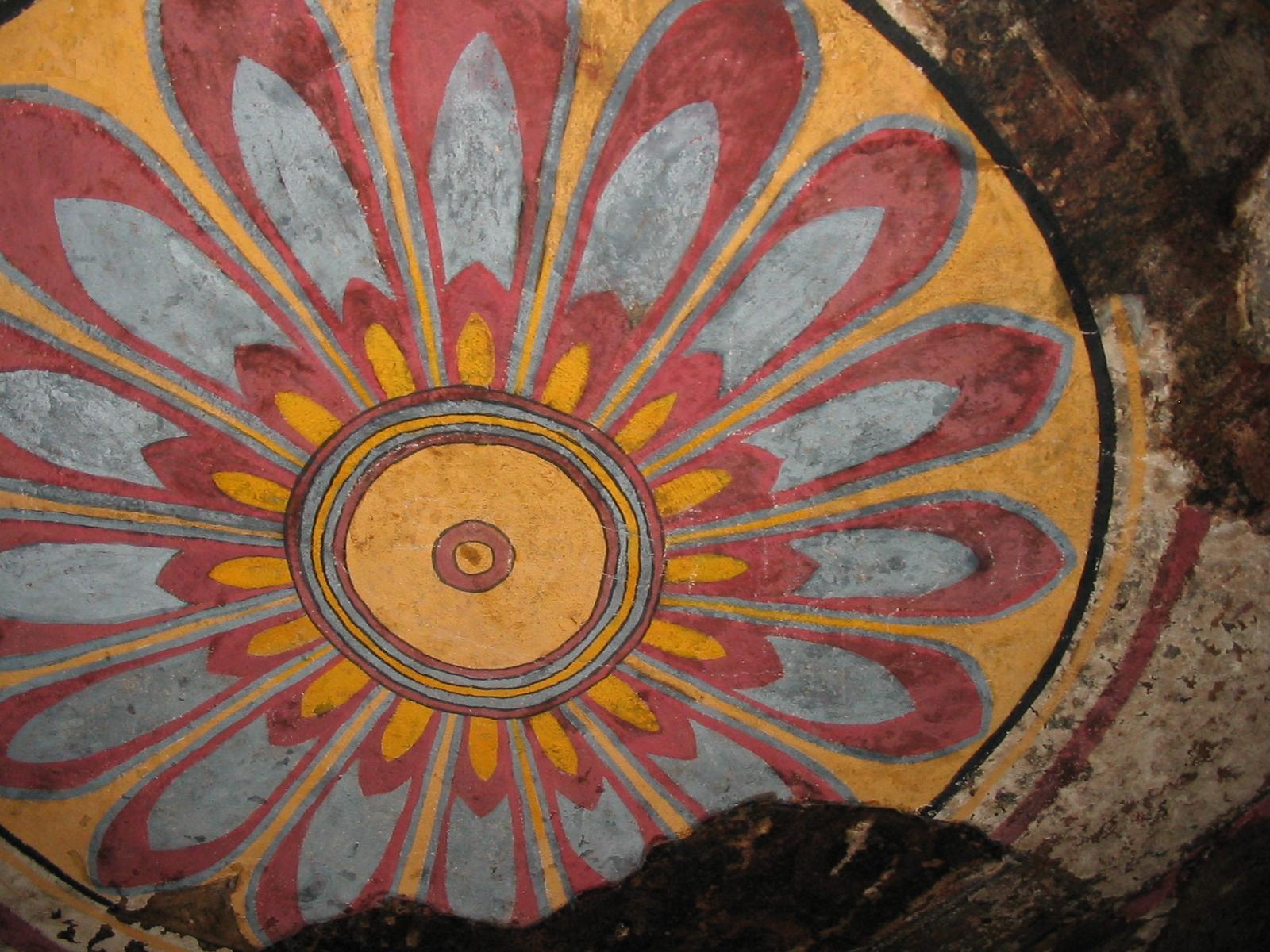
New temple
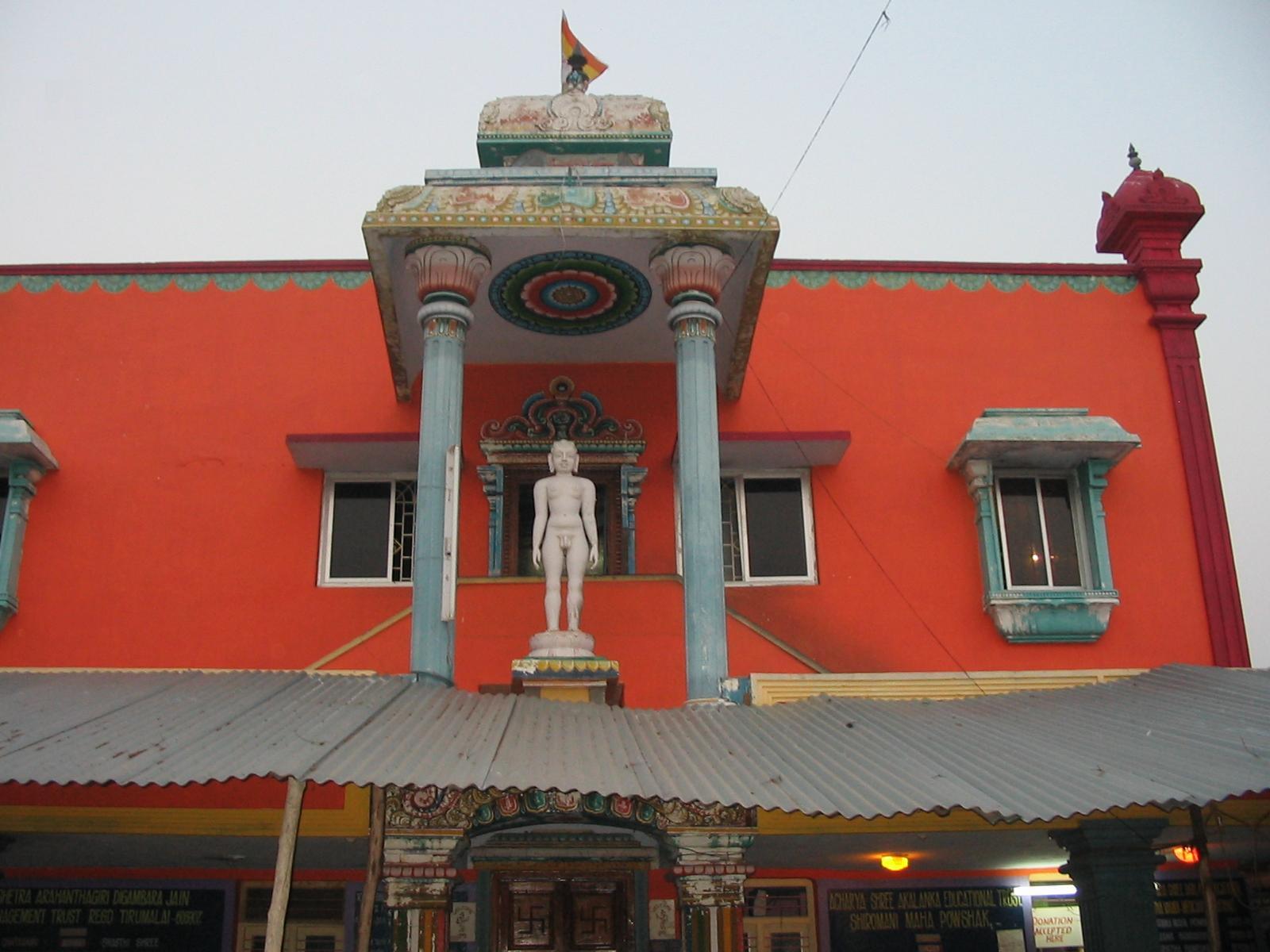
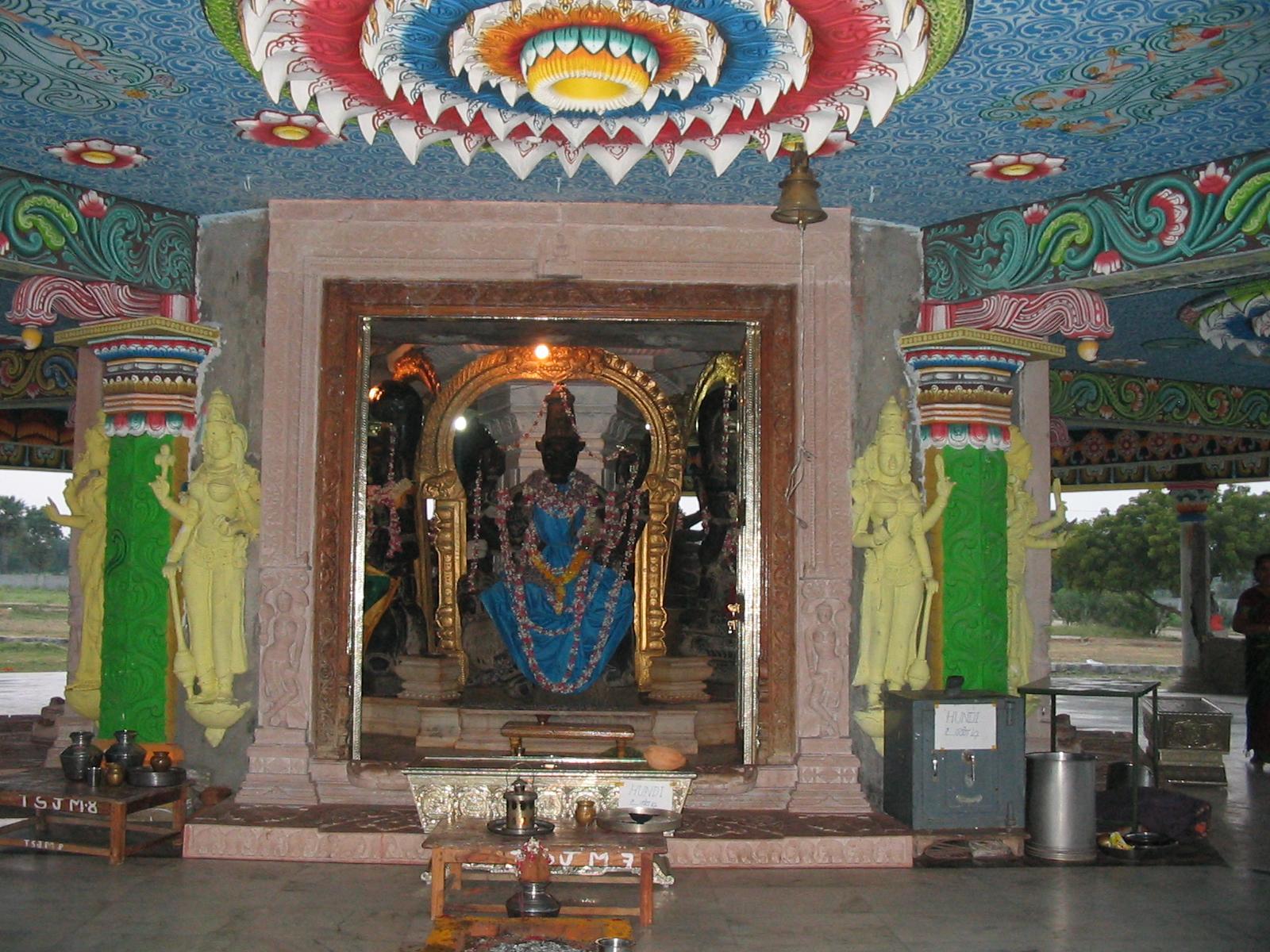
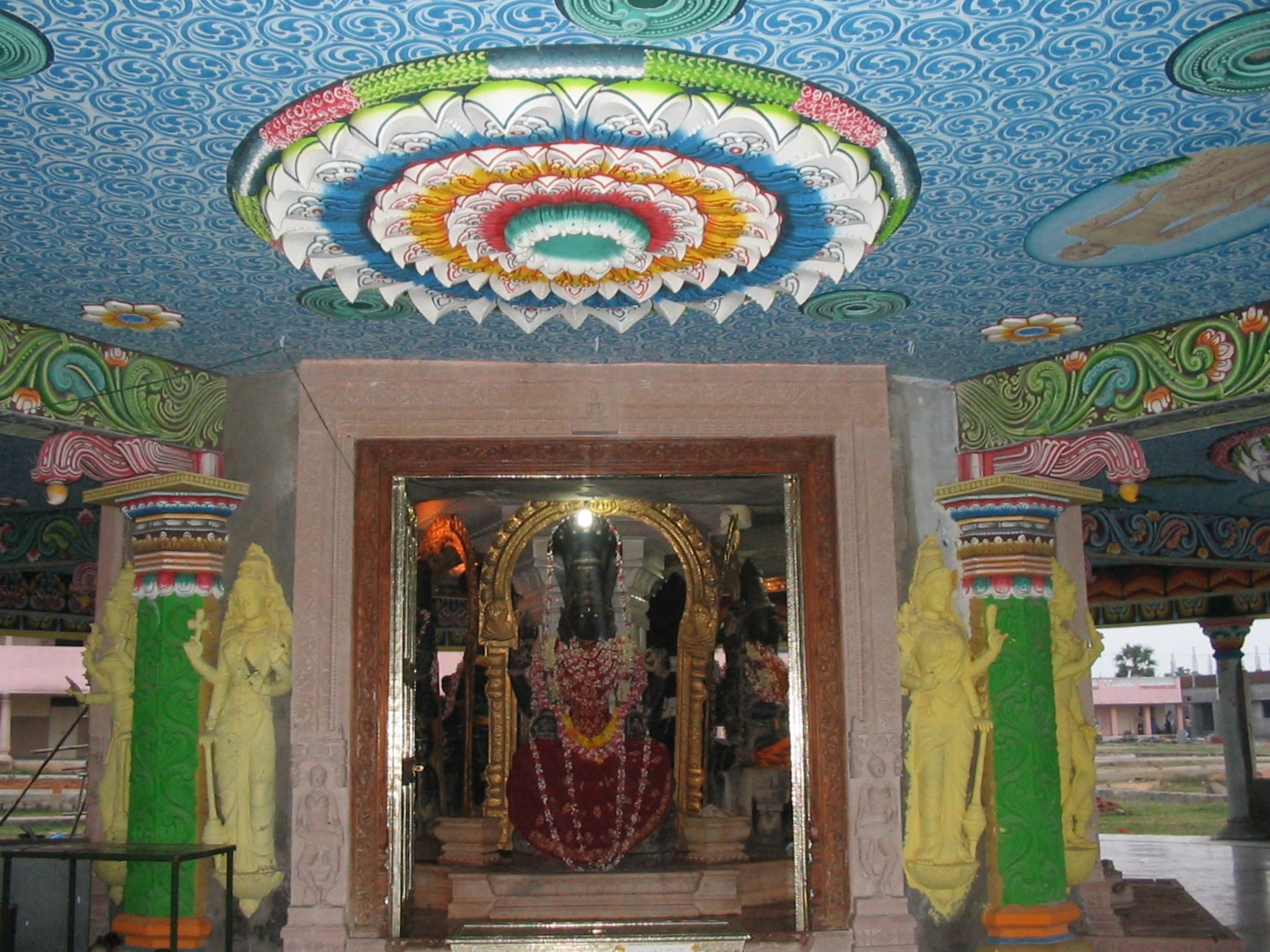
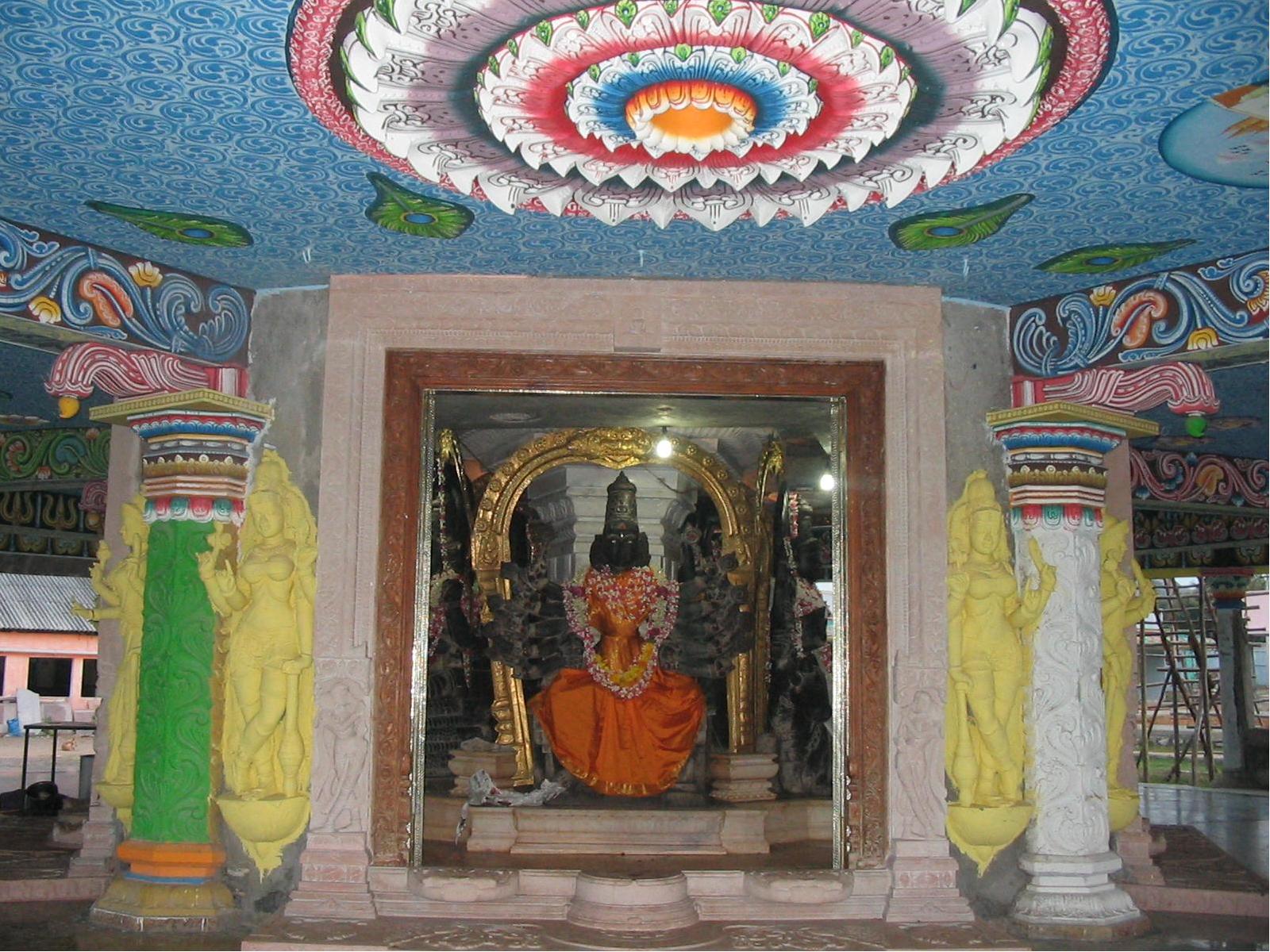
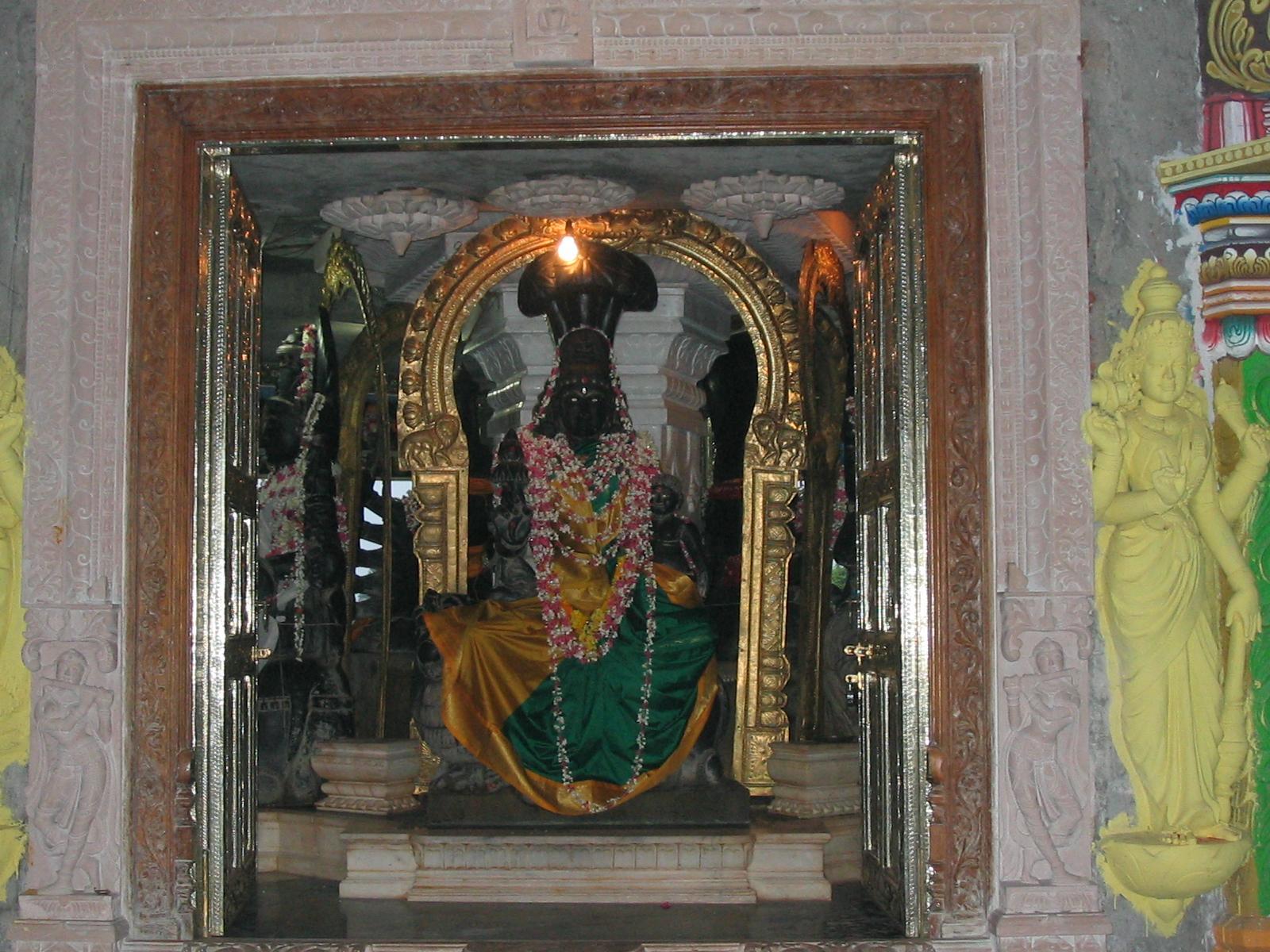
Rock inscription
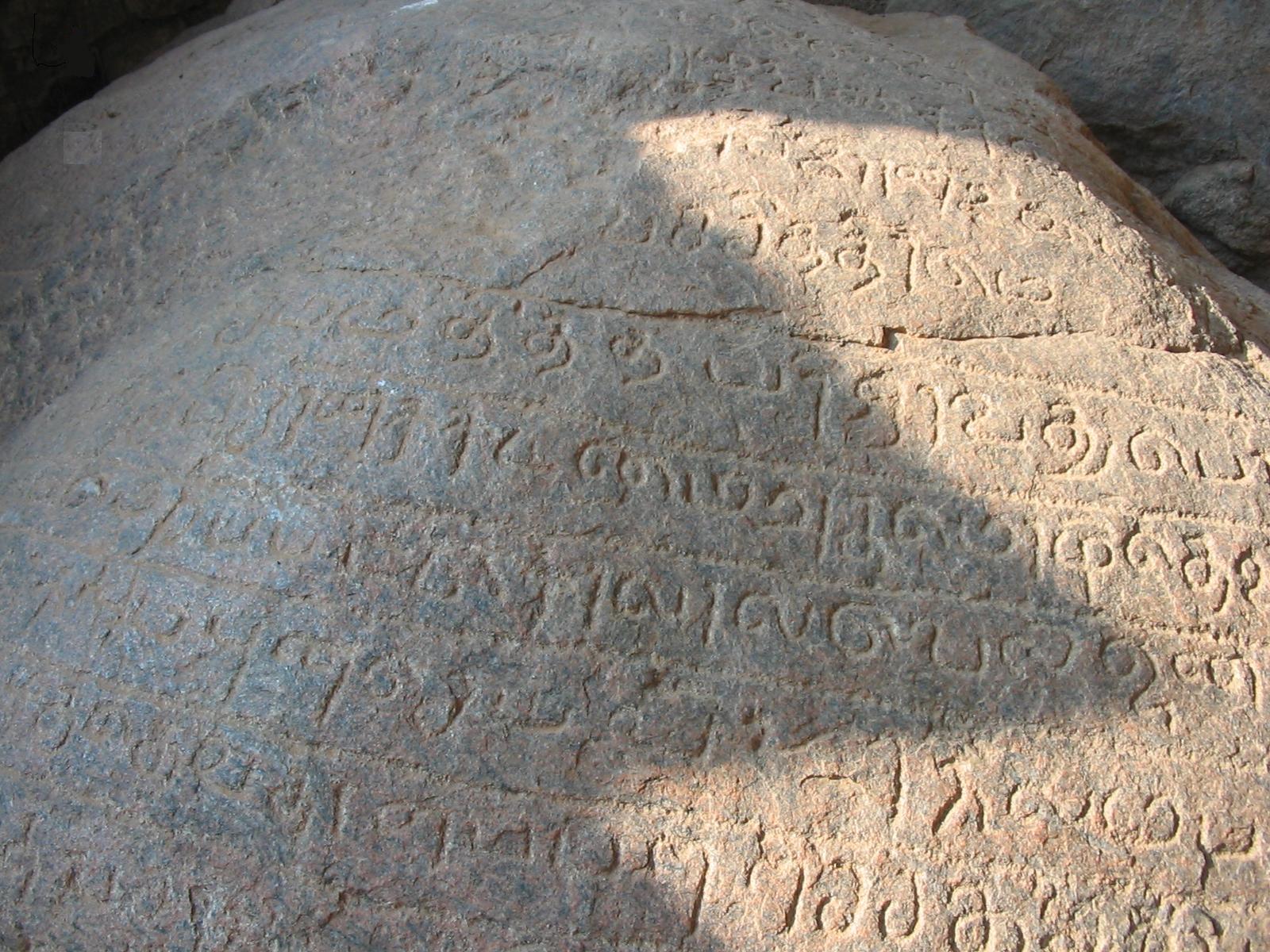
Steps to the hilltop
